
Bash if..else Statement | Bash Scripting
23K views · Aug 12, 2023 monibe.com
Bash if..else Statement Mastering Conditional Logic: Bash if..else Statement Explained. In this comprehensive tutorial, we dive into the world of conditional logic in Bash scripting, focusing on the 'if..else' statement. Whether you're a beginner in scripting or a programming enthusiast, we've got you covered with step-by-step instructions and practical examples. Join us as we navigate through the syntax and techniques needed to create powerful conditional statements, make decisions based on conditions, and control the flow of your Bash scripts. Learn how to handle various scenarios, execute different commands, and create robust scripts that respond dynamically to changing conditions. Get ready to elevate your Bash scripting skills and confidently harness the power of 'if..else' statements.

Bash Shebang | Bash scripting
3K views · Aug 12, 2023 monibe.com
Bash Shebang Demystifying the Bash Shebang: A Guide to Understanding and Using #! in Bash Scripts. In this enlightening tutorial, we unravel the significance of the Bash Shebang, also known as the '#!' symbol and its role in Bash scripting. Whether you're a newcomer to scripting or an experienced programmer, we've got you covered with step-by-step explanations and practical insights. Join us as we navigate through the fundamentals and techniques of using the Shebang to specify interpreters, enhance script compatibility, and streamline execution. Learn how to make your scripts more efficient, portable, and user-friendly with the power of the Bash Shebang. Get ready to elevate your Bash scripting skills and confidently wield the #! the symbol for optimal script execution.

Bash Functions | Bash scripts
17K views · Aug 12, 2023 monibe.com
Bash Functions Unleashing the Power of Bash Functions: A Comprehensive Guide. In this illuminating tutorial, we delve into the world of Bash functions, exploring how they enhance script modularity, reusability, and maintainability. Whether you're a scripting novice or a programming enthusiast, we've got you covered with step-by-step instructions and practical examples. Join us as we navigate through the syntax and techniques of defining and using functions in Bash. Learn how to encapsulate logic, create custom commands, and optimize your Bash scripts with the versatility of functions. Get ready to elevate your scripting skills and confidently harness the power of Bash functions for more efficient and organized code.

The most in demand skills for the future
119 views · Sep 20, 2023 monibe.com
The most in-demand skills for the future are those that are related to emerging technologies and trends, as well as those that are transferable and adaptable. Here is a list of some of the most in-demand skills for the future: Artificial intelligence (AI) and machine learning (ML) Data science and big data analytics Cloud computing and cybersecurity Programming and software development Digital marketing and social media Project management and leadership Communication and collaboration Creativity and innovation Critical thinking and problem-solving Resilience and adaptability In addition to these technical skills, it is also important to have strong soft skills, such as communication, teamwork, and problem-solving. These skills will be essential for success in any field, but especially in the future of work, where jobs are becoming more complex and interconnected. It is also important to note that the skills that are in demand will continue to evolve over time. Therefore, it is important to be adaptable and willing to learn new skills throughout your career.

Code snippet sharing site | different programming languages
616 views · Sep 22, 2023 monibe.com
Code snippet sharing site A code snippet sharing site is a website where developers can share and discover code snippets in different programming languages. These sites typically offer a variety of features, such as: Code search: Allows users to search for code snippets by language, topic, or keyword. Code syntax highlighting: Makes code snippets easier to read and understand. Code embeds: Allows users to embed code snippets in their blog posts, articles, or other websites. Code voting and commenting: Allows users to vote on and comment on code snippets, which can help to identify and improve the quality of the code. Here are some popular code snippet sharing sites: GitHub Gist CodePen Stack Overflow Code Snippets Snipplr Pastebin Codeable Repl.it Db Fiddle SQL Fiddle Codeply CodeSandbox These sites offer a variety of features and pricing plans, so you can choose the one that is right for you. When choosing a code snippet sharing site, it is important to consider the following factors: Programming languages: What programming languages do you want to share and discover code snippets in? Make sure the site you choose supports the programming languages you are interested in. Features: What features are important to you, such as code search, syntax highlighting, code embeds, and code voting and commenting? Ease of use: Choose a code snippet sharing site that is easy to use and navigate. Community: Choose a code snippet sharing site with a strong community where you can ask questions and get help. Code snippet sharing sites are a great resource for developers of all levels of experience. They can help you to learn new things, discover new tools and libraries, and collaborate with other developers.

Python Online Compiler | Python code in a web browser
162K views · Sep 22, 2023 monibe.com
Python Online Compiler A Python online compiler is a website or app that allows you to write and execute Python code in a web browser. This can be useful for a variety of purposes, such as: Learning Python: Online compilers can be a great way to learn Python because they allow you to experiment with the language without having to install any software on your computer. Testing Python code: Online compilers can be used to test Python code before deploying it to a production environment. Collaborating on Python projects: Online compilers can be used to collaborate on Python projects with other developers. Here are some popular Python online compilers: repl.it CodeSandbox Python Tutor Python Fiddle Wandbox Programiz One Compiler W3Schools To use a Python online compiler, simply create an account and start writing code. Once you have finished writing your code, click the "Run" button to execute it. The compiler will display the output of your code in the console. Python online compilers are a great resource for Python developers of all levels of experience. They are easy to use and they offer a variety of features that can be useful for learning, testing, and collaborating on Python projects. Here are some additional tips for using Python online compilers: Use version control: If you are working on a Python project that you want to keep track of, I recommend using version control, such as Git. This will allow you to track changes to your code and revert to previous versions if necessary. Use a debugger: A debugger is a tool that can help you to identify and fix errors in your code. Many Python online compilers offer built-in debuggers. Read the documentation: If you are unsure about how to use a particular feature of a Python online compiler, I recommend reading the documentation. The documentation will provide you with instructions on how to use the feature.
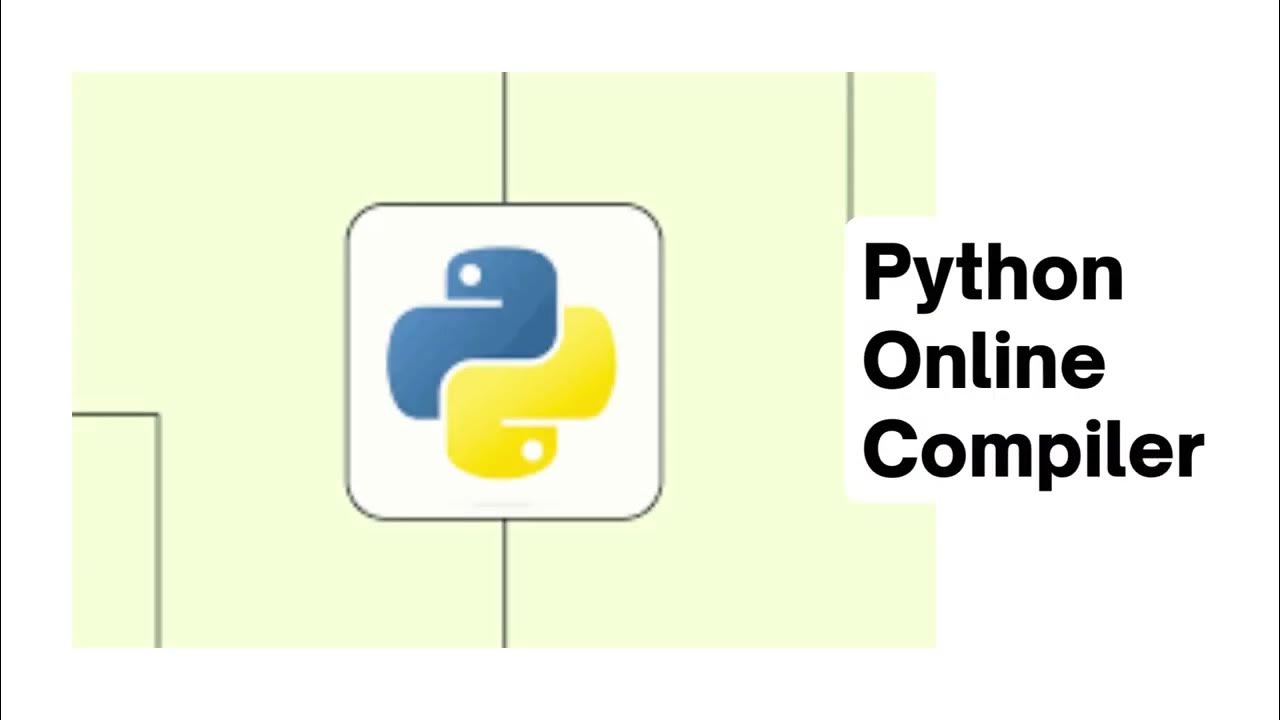
Python Online Compiler | learning testing and collaborating ...
172K views · Sep 22, 2023 monibe.com
Python Online Compiler Python Online Compiler is a tool that enables users to write and run Python code in a web browser without having to install any software. It is a useful tool for learning, testing, and collaborating on Python projects. Here are some of the benefits of using a Python Online Compiler: Convenience: Python Online Compilers are easy to use and can be accessed from anywhere with an internet connection. Accessibility: Python Online Compilers are free to use and do not require any special software or hardware. Collaboration: Python Online Compilers make it easy to share and collaborate on Python projects with other developers. Learning: Python Online Compilers are a great way to learn Python because they allow users to experiment with the language without having to install any software. Here are some of the best Python Online Compilers: repl.it CodeSandbox Python Tutor Python Fiddle Wandbox Programiz One Compiler W3Schools To use a Python Online Compiler, simply create an account and start writing code. Once you have finished writing your code, click the "Run" button to execute it. The compiler will display the output of your code in the console. Python Online Compilers are a great resource for Python developers of all levels of experience. They are easy to use and offer a variety of features that can be useful for learning, testing, and collaborating on Python projects.

Collaborative coding platform | Visual Studio Code Live Shar...
0 views · Sep 30, 2023 monibe.com
A collaborative coding platform is a software application that enables developers to work together on code remotely. These platforms offer a variety of features to facilitate teamwork and collaboration, such as: Real-time multiplayer editing: Developers can simultaneously edit the same code file, with each person's changes reflected in real time. Audio and video chat: Developers can communicate with each other using audio and video chat, which can be helpful for debugging and discussing code. Group debugging: Developers can share their screens and collaborate on debugging code. Version control integration: Collaborative coding platforms typically integrate with version control systems such as Git, which allows developers to track changes to code and collaborate on code reviews. Code snippet sharing: Collaborative coding platforms can be used to share code snippets with others, which can be helpful for pair programming and teaching. Some popular collaborative coding platforms include: Visual Studio Code Live Share CodeTogether Collabedit CodeSandbox Repl.it CodePen JSFiddle Glitch GitHub GitLab Bitbucket The best collaborative coding platform for you will depend on your specific needs and preferences. For example, if you are primarily interested in pair programming, you may want to choose a platform that offers real-time multiplayer editing and audio and video chat. If you are working on a web development project, you may want to choose a platform that is specifically designed for collaborative coding of HTML, CSS, and JavaScript. Here are some of the benefits of using a collaborative coding platform: Increased efficiency: Collaborative coding platforms can help teams to work more efficiently by allowing them to share code, debug together, and get feedback quickly. Improved code quality: Collaborative coding can help to improve code quality by encouraging peer reviews and feedback. Reduced costs: Collaborative coding platforms can help to reduce costs by eliminating the need for travel and meeting space. Improved communication and collaboration: Collaborative coding platforms can help to improve communication and collaboration between team members, even if they are located remotely. If you are working on a software development project, I encourage you to consider using a collaborative coding platform. These platforms can significantly improve your team's efficiency, code quality, and communication.
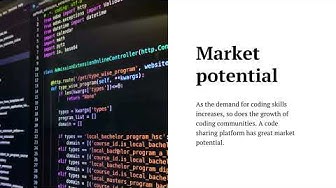
Code sharing platform | Materials, Software and Code Sharing...
0 views · Sep 30, 2023 monibe.com
Code sharing is the practice of distributing code to others, either for collaboration or for reference. There are a number of different ways to share code, including: Version control systems: Version control systems such as Git allow developers to track changes to code and collaborate on projects. Code sharing platforms: Code sharing platforms such as GitHub Gist, CodePen, and JSFiddle allow developers to share code snippets and projects with others. Pastebins: Pastebins are websites that allow users to share text online. Pastebins can be used to share code snippets, but they are not as well-suited for sharing complete projects. There are a number of benefits to code sharing, including: Collaboration: Code sharing can make it easier for developers to collaborate on projects. By sharing code, developers can get feedback from others and work together to improve the quality of their code. Education: Code sharing can be used to educate others about programming. By sharing code snippets and projects, developers can demonstrate how to solve problems and use different programming languages and frameworks. Reusability: Code sharing can help developers to reuse code. By sharing code snippets and projects, developers can save time and effort by not having to reinvent the wheel. Documentation: Code sharing can be used to document code. By commenting on code and providing documentation, developers can make it easier for others to understand and use their code. There are also some potential drawbacks to code sharing, such as: Security: Code sharing can introduce security risks. If code is not shared securely, it could be stolen or used for malicious purposes. Intellectual property: Code sharing can raise intellectual property concerns. If code is shared without permission, it could be considered copyright infringement. Code quality: There is no guarantee that code shared online is of high quality. Developers should carefully review any code that they use from third-party sources. Overall, code sharing can be a valuable tool for developers. However, it is important to be aware of the potential drawbacks and take steps to mitigate them. Here are some tips for sharing code safely and responsibly: Only share code with people that you trust. Use a version control system to track changes to your code. Comment on your code and provide documentation. Use a code sharing platform that offers security features such as private repositories and two-factor authentication. License your code under a permissive license such as the MIT License. By following these tips, you can share your code safely and responsibly and help others to learn and grow as developers.
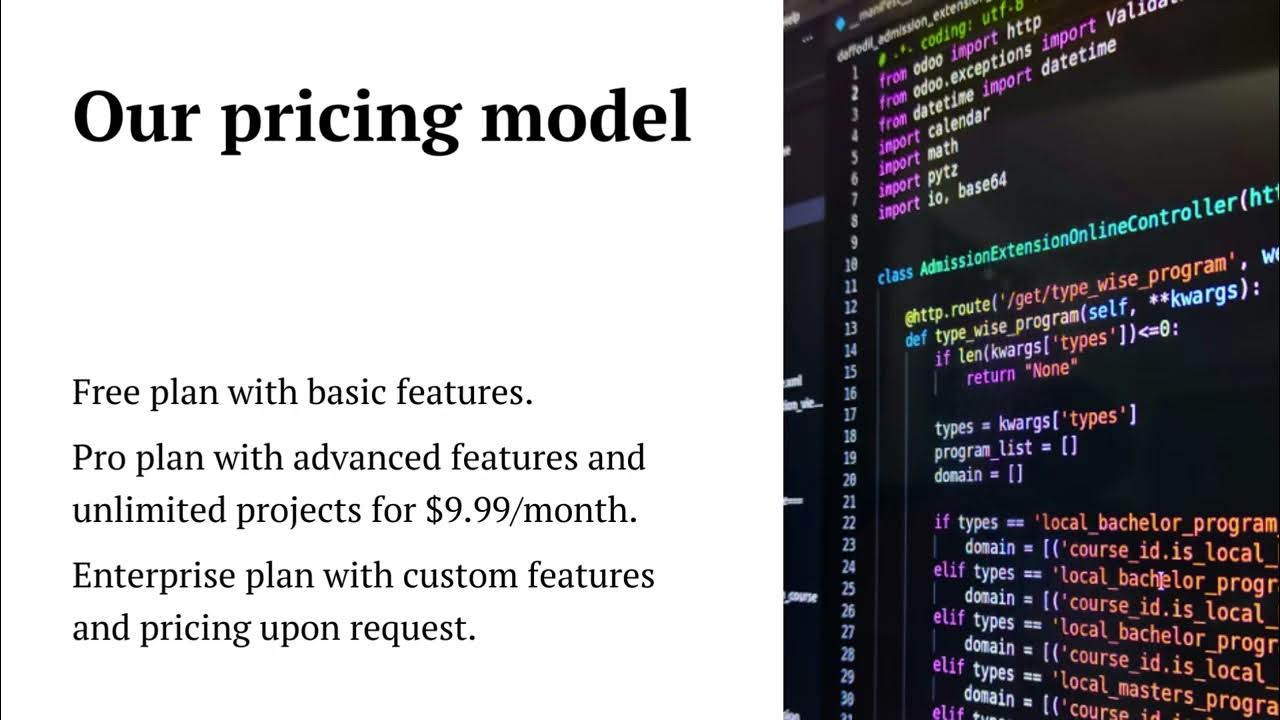
Web based IDE | programming languages, including Python, Jav...
0 views · Sep 30, 2023 monibe.com
A web-based IDE is an integrated development environment that is accessed through a web browser. Web-based IDEs offer a number of advantages over traditional desktop IDEs, including: Accessibility: Web-based IDEs can be accessed from anywhere with an internet connection, making them ideal for remote development and collaboration. Portability: Web-based IDEs do not require any installation or configuration, making them easy to get started with. Scalability: Web-based IDEs can be scaled to accommodate teams of any size. Cost-effectiveness: Web-based IDEs are typically more affordable than traditional desktop IDEs. Some popular web-based IDEs include: Repl.it: Repl.it is a free and open-source web-based IDE that supports a variety of programming languages, including Python, JavaScript, and Java. CodeSandbox: CodeSandbox is a free and open-source web-based IDE that allows developers to create and share isolated code environments. Cloud9 IDE: Cloud9 IDE is a paid web-based IDE that offers a variety of features, including code completion, debugging, and version control integration. GitHub Codespaces: GitHub Codespaces is a paid web-based IDE that allows developers to code directly in their GitHub repositories. Codeanywhere: Codeanywhere is a paid web-based IDE that offers a variety of features, including code completion, debugging, and version control integration. Web-based IDEs can be a good choice for developers who need a portable, scalable, and cost-effective IDE. They are also a good choice for developers who need to collaborate with others remotely or who need to access their IDE from a variety of devices. Here are some of the benefits of using a web-based IDE: Accessibility: Web-based IDEs can be accessed from any device with an internet connection, which makes them ideal for remote development and collaboration. Portability: Web-based IDEs do not require any installation or configuration, so you can start coding right away. Scalability: Web-based IDEs can be scaled to accommodate teams of any size, making them a good choice for both individual developers and large development teams. Cost-effectiveness: Web-based IDEs are typically more affordable than traditional desktop IDEs. If you are looking for an IDE that is accessible, portable, scalable, and cost-effective, then a web-based IDE is a good option to consider.
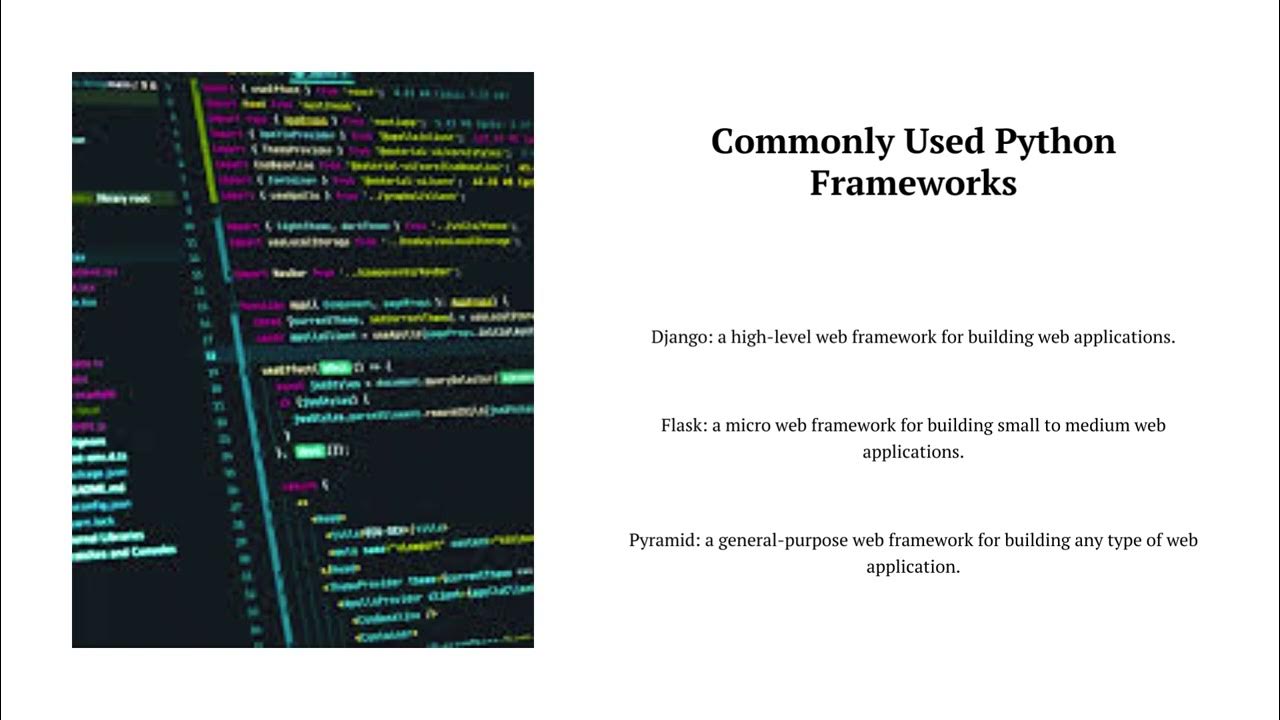
Python libraries and frameworks | parsing HTML and XML docum...
3K views · Oct 5, 2023 monibe.com
Python libraries and frameworks are collections of pre-written code that can be used to perform common tasks. Libraries are typically smaller and more focused on a specific task, while frameworks are larger and provide a more complete solution for developing a particular type of application. Here are some of the most popular Python libraries and frameworks: Libraries: NumPy: For scientific computing and data analysis. Pandas: For data manipulation and analysis. Matplotlib: For data visualization. Scikit-learn: For machine learning. TensorFlow: For deep learning. Requests: For making HTTP requests. Beautiful Soup: For parsing HTML and XML documents. Frameworks: Django: For developing web applications. Flask: For developing micro-web applications. Pyramid: For developing web applications. TurboGears: For developing web applications. CherryPy: For developing web applications. SQLAlchemy: For object-relational mapping (ORM). WTForms: For form validation and processing. Python libraries and frameworks can be used to develop a wide variety of applications, including: Web applications Desktop applications Mobile applications Machine learning applications Data science applications Scripting applications Automation applications Python libraries and frameworks make it easy to develop powerful and complex applications quickly and easily. Here are some examples of how Python libraries and frameworks can be used: NumPy: NumPy can be used to perform complex mathematical operations on large arrays of data. For example, you could use NumPy to calculate the average of a list of numbers or to find the correlation between two variables. Pandas: Pandas can be used to manipulate and analyze data in a tabular format. For example, you could use Pandas to filter data, sort data, and perform calculations on data. Matplotlib: Matplotlib can be used to create a wide variety of data visualizations, including charts, graphs, and histograms. For example, you could use Matplotlib to create a line chart to show the trend of sales over time or a bar chart to show the distribution of customer ages. Scikit-learn: Scikit-learn can be used to build and train machine learning models. For example, you could use Scikit-learn to build a classification model to predict whether a customer is likely to churn or a regression model to predict customer lifetime value. TensorFlow: TensorFlow can be used to build and train deep learning models. For example, you could use TensorFlow to build a deep learning model to recognize objects in images or to translate text from one language to another. Django: Django can be used to develop full-stack web applications. Django provides a variety of features that make it easy to develop web applications, including a built-in ORM, a template system, and a user authentication system. Flask: Flask is a micro-web framework that is lightweight and easy to use. Flask is a good choice for developing small and simple web applications. Python libraries and frameworks are powerful tools that can be used to develop a wide variety of applications.
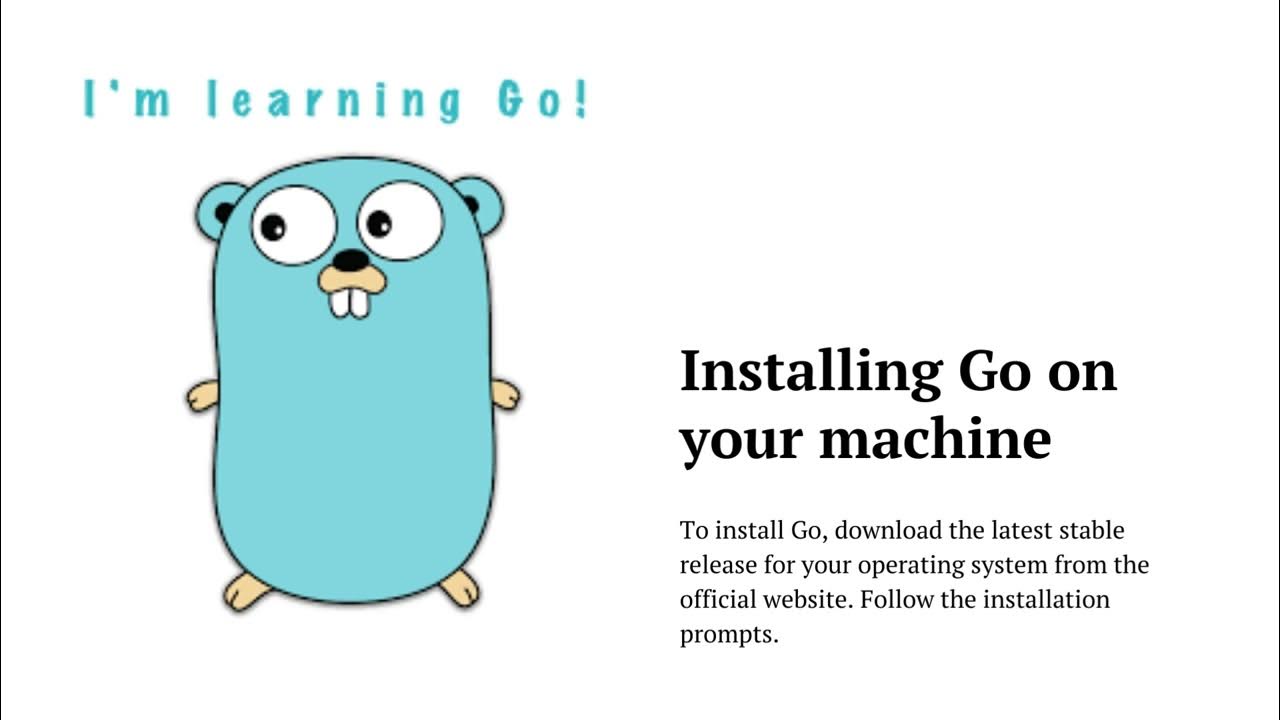
The Easy And Simple Guide To Go Programming Language | Basic...
2K views · Nov 10, 2023 monibe.com
The Easy And Simple Guide To Go Programming Language | Basics to Advanced Features
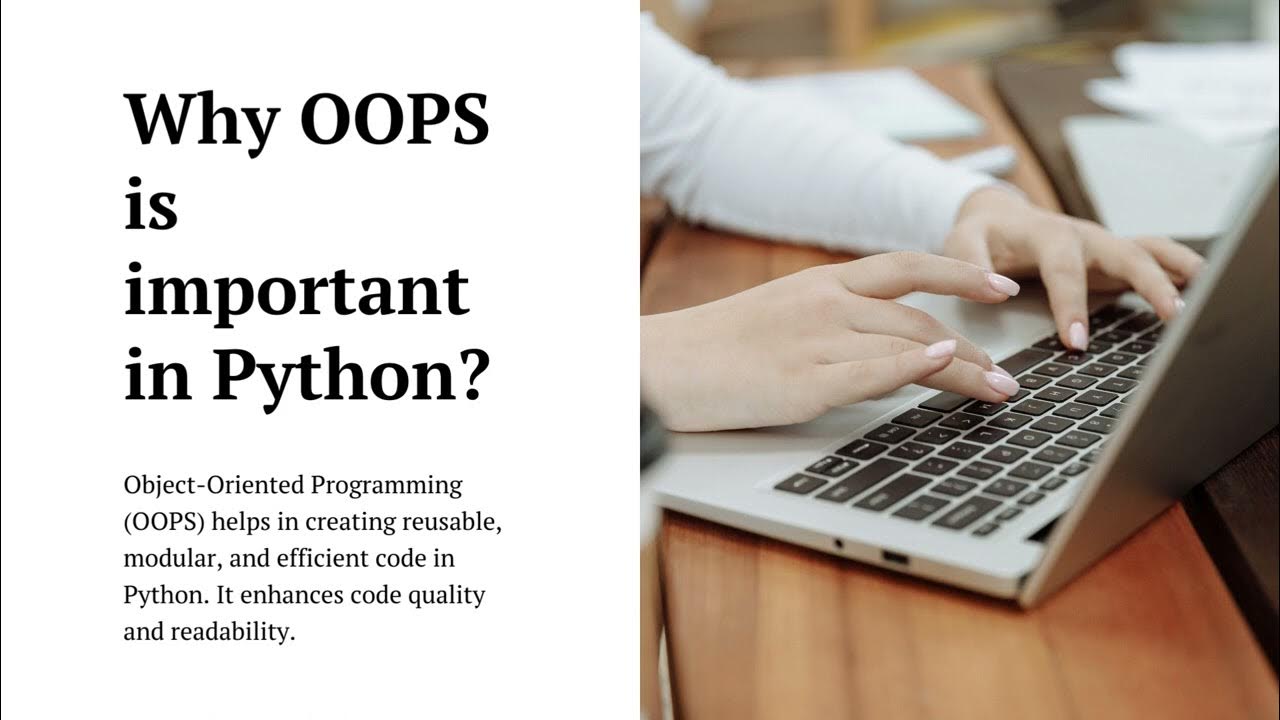
Understanding OOPS in Python | Object Oriented Programming P...
2K views · Nov 9, 2023 monibe.com
Understanding OOPS in Python | Object Oriented Programming Python: All you need to know

TCS NQT Your Ultimate Guide to Success | programming languag...
2K views · Nov 9, 2023 monibe.com
TCS NQT Your Ultimate Guide to Success | Programming languages such as C, C++, and Java

The Easiest Guide to Understand Basic Concepts of C++ | Lear...
168K views · Nov 9, 2023 monibe.com
The Easiest Guide to Understand Basic Concepts of C++ | Learn C++ Programming

Object Oriented Programming in C++ | C++ OOP (Object-Oriente...
8K views · Nov 9, 2023 monibe.com
Object Oriented Programming in C++ | C++ OOP (Object-Oriented Programming) | (OOPs)
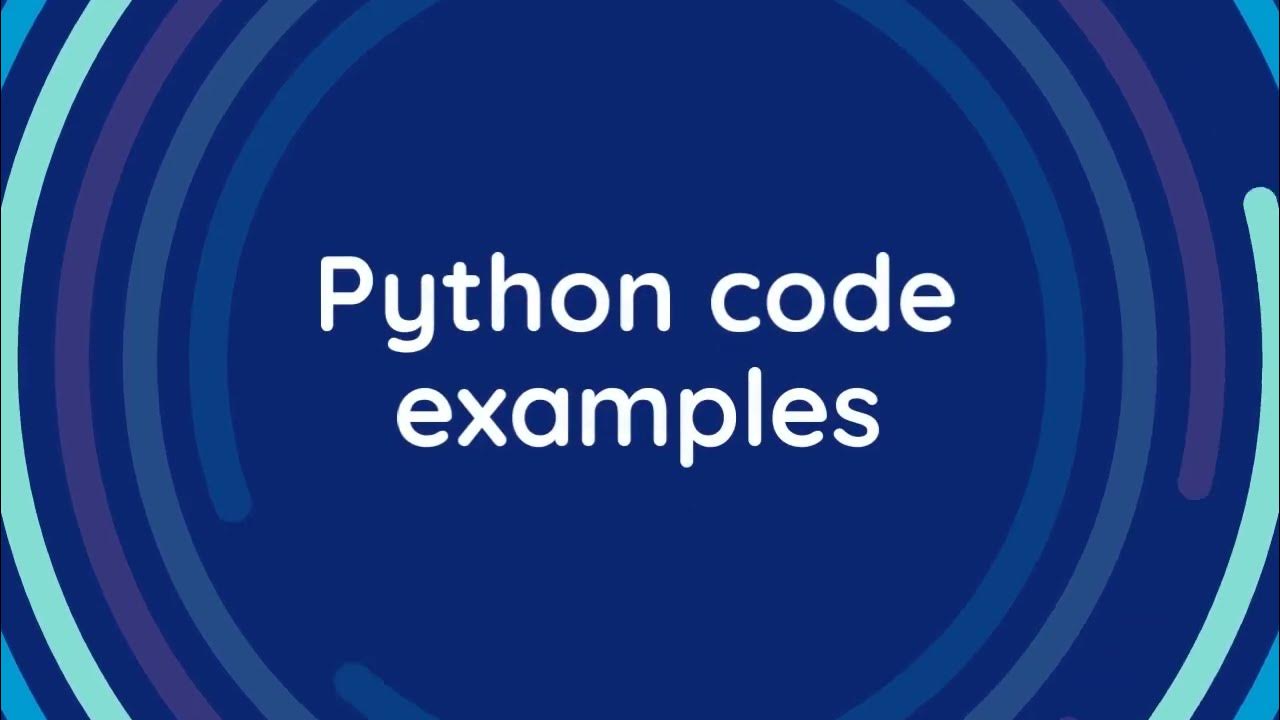
Python code examples | Python Programming Example | Programm...
5K views · Oct 27, 2023 monibe.com
Here are some simple Python code examples: Python # Print "Hello, world!" print("Hello, world!") Use code with caution. Learn more Output: Hello, world! Python # Add two numbers num1 = 10 num2 = 20 sum = num1 + num2 print(sum) Use code with caution. Learn more Output: 30 Python # Find the largest number in a list list1 = [10, 20, 30, 40, 50] largest_number = max(list1) print(largest_number) Use code with caution. Learn more Output: 50 Python # Reverse a string string = "Hello, world!" reversed_string = string[::-1] print(reversed_string) Use code with caution. Learn more Output: !dlrow ,olleH Python # Check if a number is prime number = 11 def is_prime(number): for i in range(2, int(number**0.5) + 1): if number % i == 0: return False return True if is_prime(number): print("The number is prime.") else: print("The number is not prime.") Use code with caution. Learn more Output: The number is prime. These are just a few simple Python code examples. There are many other things you can do with Python, such as developing web applications, machine learning models, and data science scripts. With a little practice, you can learn to use Python to solve all sorts of problems!
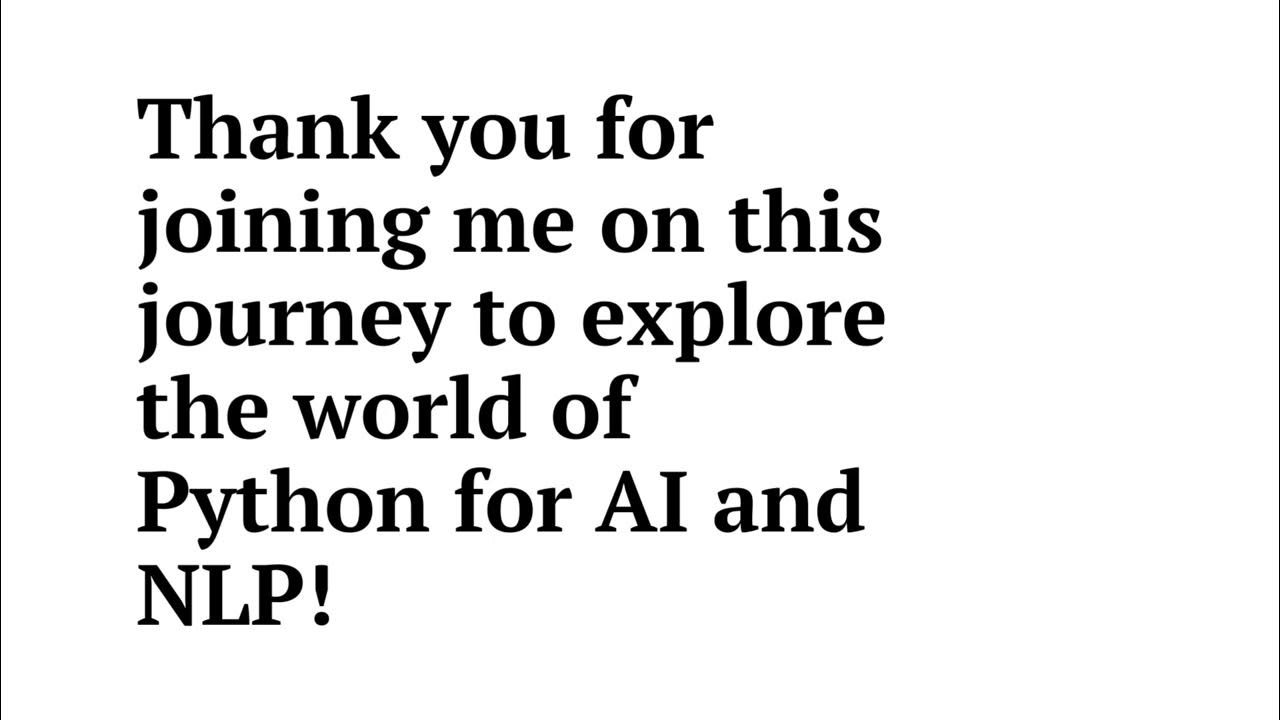
Python for artificial intelligence | natural language proces...
617 views · Oct 27, 2023 monibe.com
Python is a widely used programming language for artificial intelligence (AI) and natural language processing (NLP). It is a general-purpose language, which means that it can be used for a variety of tasks, but it is well-suited for AI and NLP because of its: Simplicity: Python is a relatively easy language to learn, even for beginners. This makes it a good choice for people who are new to AI and NLP. Expressiveness: Python is a very expressive language, which means that it can be used to write code that is both clear and concise. This is important for AI and NLP tasks, which can be complex. Versatility: Python can be used to develop a wide variety of AI and NLP applications, from simple chatbots to complex machine learning models. Large community: Python has a large and active community, which means that there are many resources available to help users learn the language and solve problems. In addition to these general benefits, Python also has a number of specific features that make it well-suited for AI and NLP. For example, Python has a number of libraries and frameworks that are specifically designed for AI and NLP tasks. These libraries and frameworks provide users with a variety of pre-trained models and tools that can be used to develop AI and NLP applications. Here are some examples of popular Python libraries and frameworks for AI and NLP: NLTK (Natural Language Toolkit): NLTK is a comprehensive Python library for NLP. It provides a wide range of tools for tasks such as tokenization, stemming, lemmatization, part-of-speech tagging, named entity recognition, and sentiment analysis. spaCy: spaCy is another popular Python library for NLP. It is known for its speed and accuracy. spaCy provides a variety of features, including tokenization, part-of-speech tagging, named entity recognition, and dependency parsing. TensorFlow: TensorFlow is a popular Python library for machine learning. It can be used to develop a wide variety of AI models, including models for NLP tasks. PyTorch: PyTorch is another popular Python library for machine learning. It is similar to TensorFlow, but it has a more Pythonic syntax. PyTorch can also be used to develop a wide variety of AI models, including models for NLP tasks. If you are interested in learning more about Python for AI and NLP, there are a number of resources available online and in libraries. You can also find many tutorials and courses that can teach you the basics of Python and how to use it for AI and NLP tasks. Here are some tips for getting started with Python for AI and NLP: Learn the basics of Python: If you are not already familiar with Python, you should start by learning the basics of the language. There are many resources available online and in libraries to help you learn Python. Choose the right libraries and frameworks: There are a number of Python libraries and frameworks available for AI and NLP. Choose the libraries and frameworks that are right for your needs, depending on the specific tasks you want to perform. Start with simple projects: Once you have learned the basics of Python and chosen the right libraries and frameworks, you can start by developing simple AI and NLP projects. This will help you learn how to use the libraries and frameworks and how to apply AI and NLP techniques to real-world problems. Use resources from the community: The Python community is large and active. There are many resources available online and in libraries to help you learn Python and AI/NLP. Don't be afraid to ask for help if you get stuck. With a little effort, you can learn how to use Python to develop AI and NLP applications. Python is a powerful and versatile language that can be used to solve a wide variety of problems.
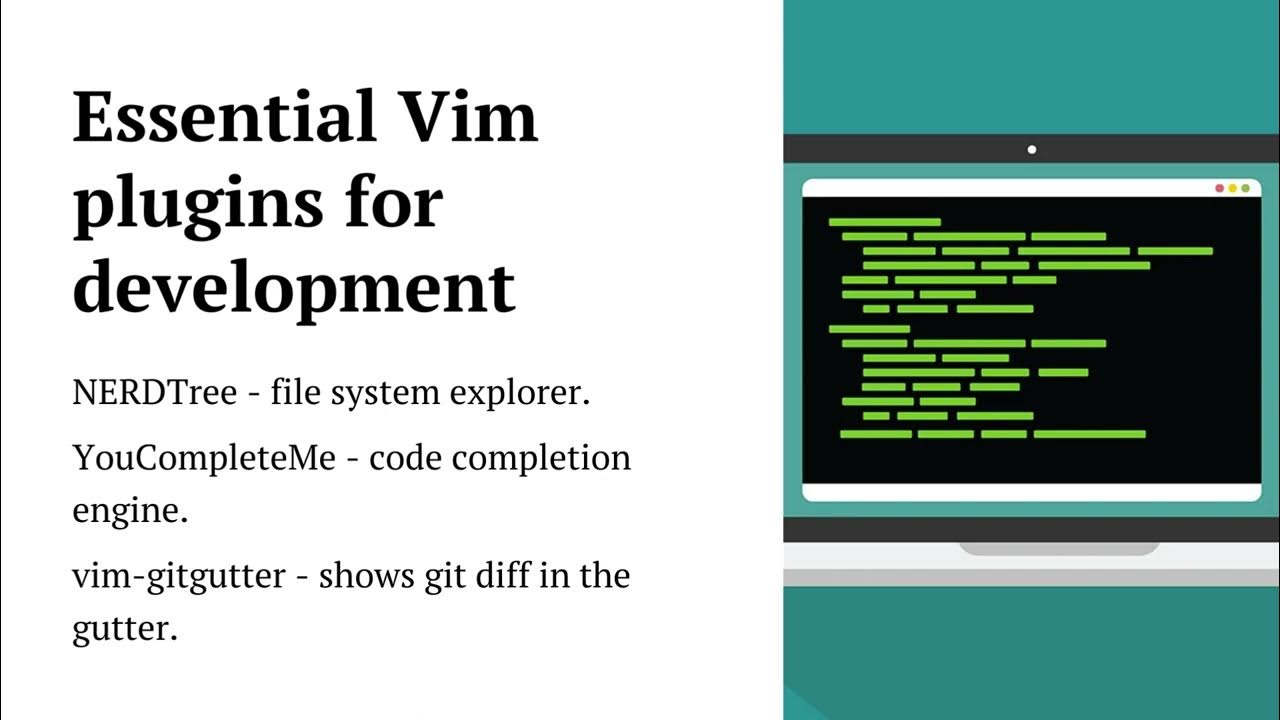
Top 10 Vim plugins for programming in multiple languages | V...
4K views · Nov 9, 2023 monibe.com
Top 10 Vim plugins for programming in multiple languages | Vim plugins for development
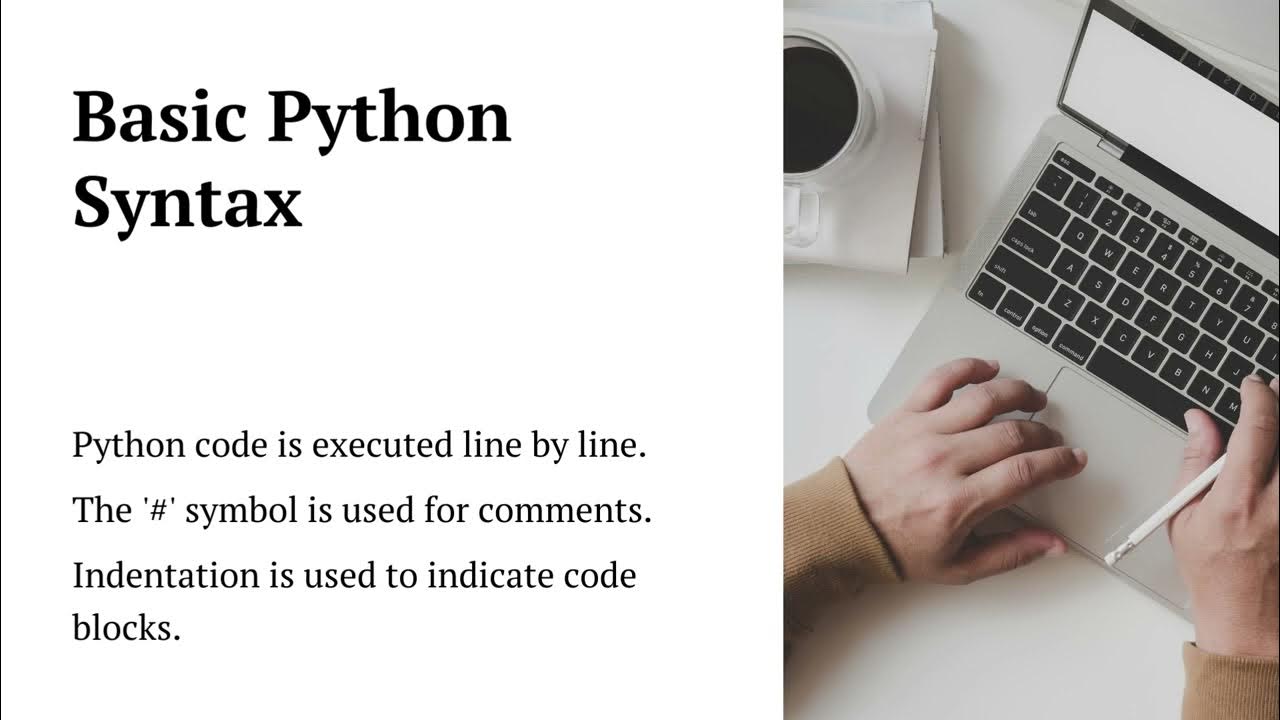
Learn Python Tutorial | Python Programming Language | Python...
3K views · Nov 9, 2023 monibe.com
Learn Python Tutorial | Python Programming Language | Python 3.12.0 documentation | Python Education

A Beginner's Guide to Java Programming | A Beginner'...
2K views · Nov 9, 2023 monibe.com
A Beginner's Guide to Java Programming | A Beginner's Guide to Java Programming - Online Course
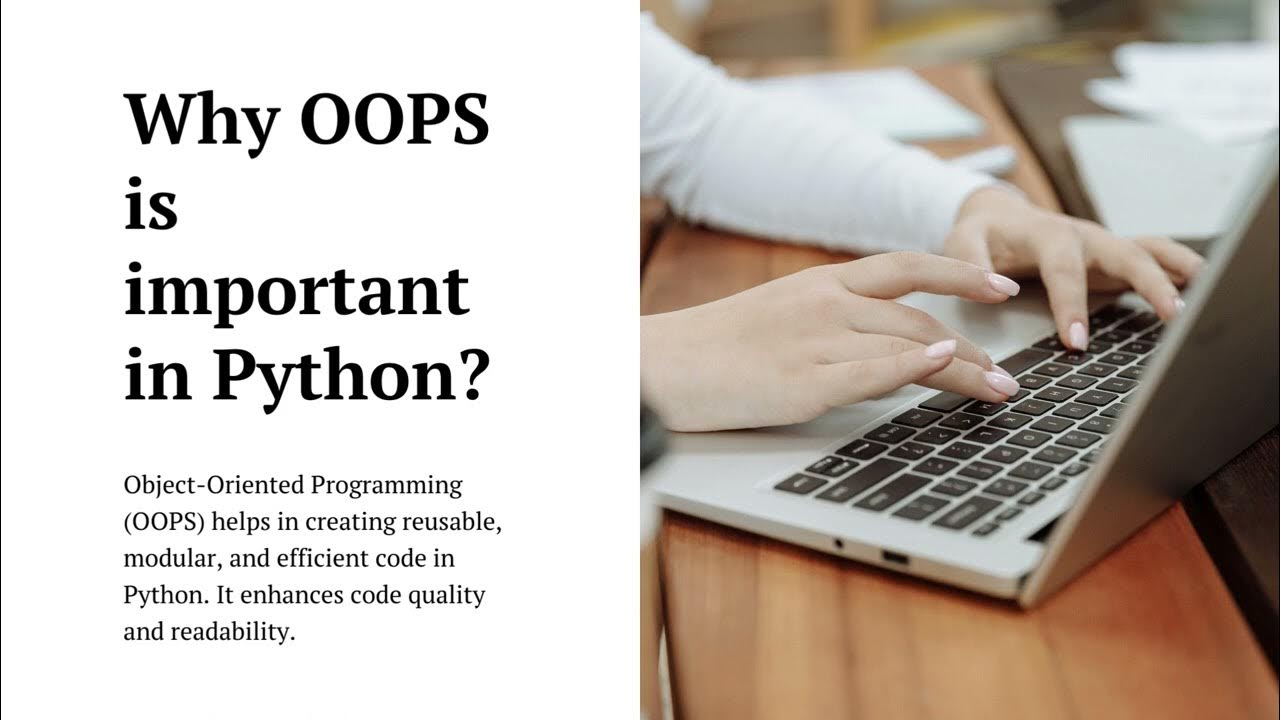
Understanding OOPS in Python | Object-oriented programming (...
2 views · Sep 30, 2023 monibe.com
Object-oriented programming (OOP) is a programming paradigm that uses objects and classes to structure code. Objects are self-contained entities that contain data and behavior. Classes are blueprints for creating objects. OOP is a popular programming paradigm because it offers a number of advantages, including: Code reuse: OOP allows you to reuse code by creating classes and objects. This can make your code more efficient and easier to maintain. Encapsulation: OOP allows you to encapsulate data and behavior within objects. This helps to protect your data from accidental modification and makes your code more modular. Abstraction: OOP allows you to abstract away the implementation details of objects. This makes your code easier to understand and maintain. Polymorphism: OOP allows you to implement polymorphism, which means that different objects can respond to the same message in different ways. This makes your code more flexible and extensible. Understanding OOP in Python Python is a fully object-oriented programming language. This means that everything in Python is an object, including numbers, strings, lists, and dictionaries. To create a class in Python, you use the class keyword. The class definition specifies the name of the class and its attributes and methods. For example, the following code defines a class called Car: Python class Car: def __init__(self, make, model, year): self.make = make self.model = model self.year = year def drive(self): print("The car is driving.") def stop(self): print("The car is stopped.") Use code with caution. Learn more To create an instance of the Car class, you use the new keyword. The new keyword takes the name of the class and any arguments to the class's constructor as arguments. For example, the following code creates a new Car object with the make Honda, model Civic, and year 2023: Python car = Car("Honda", "Civic", 2023) Use code with caution. Learn more You can then call the object's methods to access its data and behavior. For example, the following code calls the drive() method on the car object: Python car.drive() Use code with caution. Learn more This will print the following output to the console: The car is driving. OOP concepts in Python Some of the key OOP concepts in Python include: Classes: Classes are blueprints for creating objects. Objects: Objects are self-contained entities that contain data and behavior. Attributes: Attributes are the data that is associated with an object. Methods: Methods are the functions that are associated with an object. Inheritance: Inheritance allows you to create new classes that are based on existing classes. Polymorphism: Polymorphism allows you to implement polymorphism, which means that different objects can respond to the same message in different ways. Conclusion OOP is a powerful programming paradigm that offers a number of advantages, including code reuse, encapsulation, abstraction, and polymorphism. Python is a fully object-oriented programming language, and it provides a number of features that make it easy to implement OOP concepts in your code. If you are new to OOP, I recommend starting by learning about the basic OOP concepts of classes, objects, attributes, and methods. Once you have a good understanding of these concepts, you can start to learn about more advanced OOP concepts such as inheritance and polymorphism.

A Beginner's Guide to Java Programming | Java also suppo...
2K views · Oct 15, 2023 monibe.com
Java is a general-purpose, object-oriented programming language that is used to develop a wide variety of applications, including web applications, mobile applications, desktop applications, and embedded systems. It is one of the most popular programming languages in the world, and it is known for its reliability, security, and portability. Here is a beginner's guide to Java programming: Getting started To get started with Java programming, you will need to install the Java Development Kit (JDK). The JDK includes the Java compiler, which is used to compile Java code into bytecode. Bytecode is a platform-independent format that can be executed on any platform that has a Java Virtual Machine (JVM). Once you have installed the JDK, you can start writing Java code. To do this, you can use a text editor or an integrated development environment (IDE). An IDE is a software application that provides a variety of features to help you write, compile, and debug Java code. Some popular IDEs for Java programming include Eclipse, IntelliJ IDEA, and NetBeans. Java basics Java is a statically typed language, which means that the data type of each variable must be declared before it is used. Java also has a number of primitive data types, including int, long, float, double, char, and boolean. In addition to primitive data types, Java also has a number of reference data types, such as String and Object. Reference data types are used to store references to objects. Objects are instances of classes. Classes are used to define the structure and behavior of objects. Java also supports object-oriented programming concepts such as inheritance, polymorphism, and encapsulation. Inheritance allows you to create new classes that inherit the properties and behaviors of existing classes. Polymorphism allows you to write code that can handle different types of objects in a generic way. Encapsulation allows you to bundle data and behavior together into a single unit. Writing Java programs To write a Java program, you must first create a class. A class is a blueprint for creating objects. It defines the structure and behavior of objects. To create a class, you use the class keyword followed by the name of the class. For example, the following code creates a class called Person: Java public class Person { // Class members go here } Use code with caution. Learn more Once you have created a class, you can create objects of that class using the new keyword. For example, the following code creates a new Person object: Java Person person = new Person(); Use code with caution. Learn more You can then access the members of the object using the dot notation. For example, the following code prints the name of the person object to the console: Java System.out.println(person.name); Use code with caution. Learn more Learning more about Java There are many resources available to help you learn more about Java programming. Here are a few suggestions: The Java Tutorial: https://docs.oracle.com/javase/tutorial/ The MOOC Java Programming for Beginners on Coursera: https://www.coursera.org/learn/java-programming The book Head First Java by Kathy Sierra and Bert Bates Conclusion Java is a powerful and versatile programming language that can be used to develop a wide variety of applications. It is a good language for beginners to learn, as it is relatively easy to learn and there are many resources available to help you get started
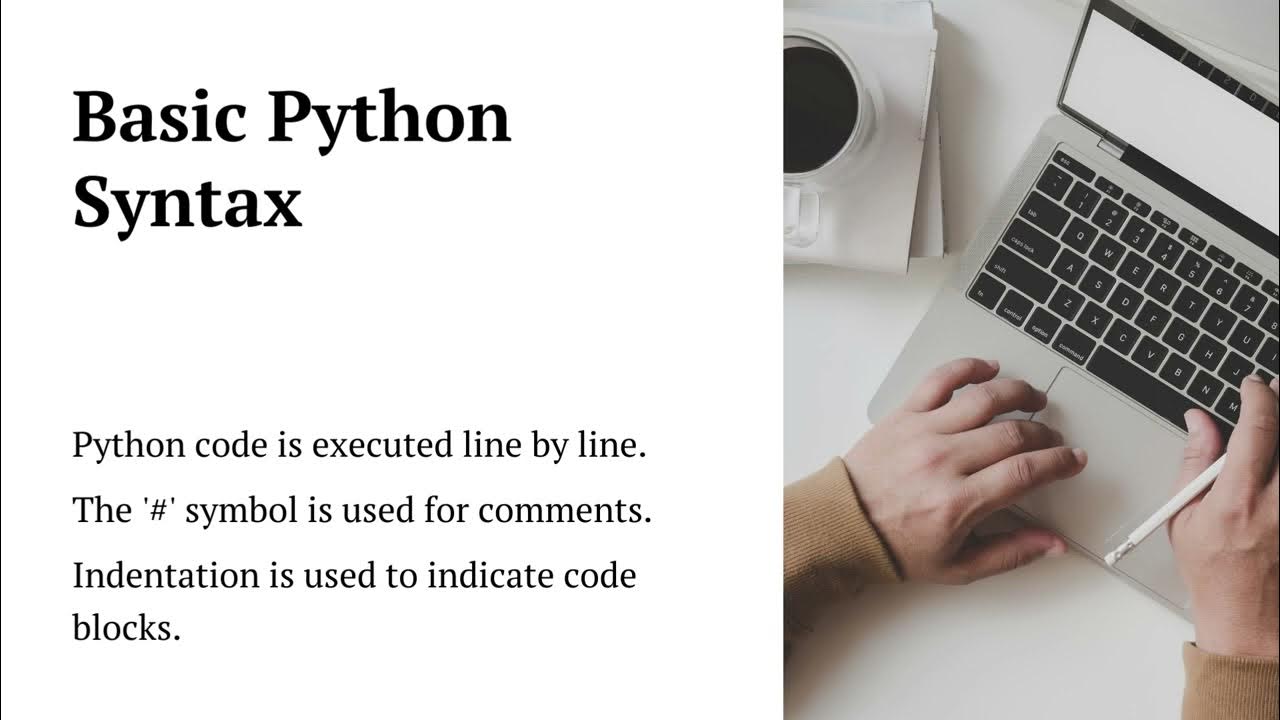
Introduction to Python Programming Language | Python, variab...
129 views · Oct 15, 2023 monibe.com
Python is a general-purpose, high-level programming language. Its design philosophy emphasizes code readability with its notable use of significant whitespace. Its language constructs and object-oriented approach aim to help programmers write clear, logical code for small and large-scale projects. Python is a popular choice for beginners in programming because it is relatively easy to learn and has a large community of users and developers. It is also a popular language for data science, machine learning, and artificial intelligence. Here is a brief introduction to the Python programming language: Variables and data types In Python, variables are used to store data. To create a variable, you simply assign a value to it. For example, the following code creates a variable called name and assigns the value "Bard" to it: Python name = "Bard" Use code with caution. Learn more Python has a number of different data types, including strings, numbers, booleans, and lists. The data type of a variable determines what kind of data it can store and what operations can be performed on it. Functions Functions are used to group code together and perform a specific task. To create a function, you use the def keyword followed by the name of the function and a pair of parentheses. Inside the parentheses, you list the parameters that the function takes. The body of the function goes between the curly braces. For example, the following code creates a function called greet(): Python def greet(): print("Hello, world!") Use code with caution. Learn more To call the function, you simply type the name of the function followed by a pair of parentheses. For example, the following code calls the greet() function: Python greet() Use code with caution. Learn more Conditional statements Conditional statements allow you to control the flow of your code based on certain conditions. The most common conditional statements are if, else, and elif. For example, the following code uses an if statement to check if the variable name is equal to the string "Bard". If it is, the code prints a greeting to the console: Python if name == "Bard": print("Hello, Bard!") Use code with caution. Learn more Loops Loops allow you to repeat code a certain number of times or until a certain condition is met. The most common loops are for loops and while loops. For example, the following code uses a for loop to print the numbers from 1 to 10 to the console: Python for i in range(1, 11): print(i) Use code with caution. Learn more Classes and objects Python supports object-oriented programming concepts such as classes and objects. Classes are used to define the structure and behavior of objects. Objects are instances of classes. For example, the following code creates a class called Person: Python class Person: def __init__(self, name, age): self.name = name self.age = age def greet(self): print(f"Hello, my name is {self.name} and I am {self.age} years old.") Use code with caution. Learn more To create an object of the Person class, you would use the following code: Python person = Person("Bard", 2) Use code with caution. Learn more You can then access the members of the object using the dot notation. For example, the following code calls the greet() method on the person object: Python person.greet() Use code with caution. Learn more Conclusion Python is a powerful and versatile programming language that can be used for a wide variety of tasks. It is a good language for beginners to learn, as it is relatively easy to learn and there are many resources available to help you get started. If you are interested in learning more about Python, there are many resources available online and in libraries. You can also find many Python tutorials and courses on websites such as Coursera and Udemy. Sources dev.to/veldakiara/the-framework-for-perfectionists-with-deadlines-4n6c profoundedutech.com/blog/what-is-python-and-benefit-of-python-course/ cgpioneer.in/rsx3e/python-cheat-sheet-poster github.com/C5fifteen/python-examples

TCS NQT Your Ultimate Guide to Success | programming languag...
338 views · Oct 15, 2023 monibe.com
TCS NQT is a national-level online test conducted by Tata Consultancy Services (TCS) for hiring fresh graduates in the IT industry. The test is designed to assess the candidate's quantitative aptitude, verbal ability, and programming skills. To succeed in the TCS NQT, candidates must have a strong understanding of the following topics: Quantitative aptitude: This includes topics such as arithmetic, algebra, geometry, and trigonometry. Verbal ability: This includes topics such as grammar, vocabulary, and comprehension. Programming skills: This includes topics such as data structures, algorithms, and programming languages such as C, C++, and Java. Here are some tips for success in the TCS NQT: Prepare well in advance: Start your preparation at least 3-6 months before the exam. This will give you enough time to cover all the topics and practice your skills. Use the right study materials: There are many books and online resources available to help you prepare for the TCS NQT. Choose study materials that are aligned with the exam syllabus and that cover all the topics in a comprehensive manner. Practice regularly: The best way to prepare for any exam is to practice regularly. Solve mock tests and previous year papers to get a feel for the exam format and to identify your strengths and weaknesses. Stay calm and focused on the day of the exam: Get a good night's sleep before the exam and eat a healthy breakfast on the day of the exam. Arrive at the exam center early so that you have enough time to relax and focus on the exam. Here are some additional tips: Focus on your strengths: Identify your strengths and weaknesses and focus on improving your weaknesses. Take breaks: Don't try to study for long hours without taking breaks. Take short breaks every 30-45 minutes to stay refreshed and focused. Stay motivated: Keep yourself motivated by setting realistic goals and by tracking your progress. If you follow these tips, you will be well on your way to success in the TCS NQT.

Bash Functions | Bash Functions Tutorial | BASH Programming ...
2K views · Oct 23, 2023 monibe.com
Bash functions are a way to encapsulate code and reuse it throughout a Bash script. They can be used to perform common tasks, such as: Validating input Formatting output Organizing code into logical blocks Performing complex calculations To define a function in Bash, you use the following syntax: Bash function function_name() { # code block } Use code with caution. Learn more The function_name is the name of the function. The code block is the code that will be executed when the function is called. To call a function, you simply use the function name followed by parentheses. For example, to call the function my_function(), you would type: Bash my_function() Use code with caution. Learn more Functions can also take parameters. To pass a parameter to a function, you list the parameters in parentheses after the function name. For example, to pass the parameter $1 to the function my_function(), you would type: Bash my_function() $1 Use code with caution. Learn more The parameter $1 will be assigned to the first variable in the function. You can access the other parameters using $2, $3, and so on. Functions can also return values. To return a value from a function, you use the return statement. For example, the following function returns the sum of two numbers: Bash function add() { return $(( $1 + $2 )) } Use code with caution. Learn more To call this function and get the result, you would type: Bash result=$(add 1 2) Use code with caution. Learn more The variable $result will now contain the value 3. Functions are a powerful tool that can help you to write more efficient and reusable Bash scripts. Here are some tips for using Bash functions: Use descriptive names for your functions. This will make your code more readable and easier to maintain. Document your functions. This will help you and other developers to understand how to use your functions. Group similar functions together. This will make your code more organized and easier to find. Use functions to encapsulate common tasks. This will make your code more reusable and easier to maintain.
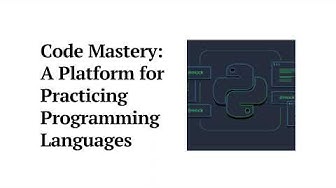
Programming language practice platform
9K views · Sep 22, 2023 monibe.com
Programming language practice platform A programming language practice platform is a website or app that allows you to practice writing code in different programming languages. These platforms typically offer a variety of features, such as: Interactive coding challenges: These challenges allow you to practice writing code and test your skills in a variety of areas. Code editors: These editors provide a simple and convenient way to write and test your code. Feedback: Many platforms provide feedback on your code, which can help you identify and fix errors. Community: Many platforms also have communities where you can ask questions and get help from other programmers. Here are some popular programming language practice platforms: LeetCode HackerRank CodeChef Coderbyte TopCoder Project Euler Codewars CodeSignal Exercism freeCodeCamp Codecademy edabit CodinGame These platforms offer a variety of features and pricing plans, so you can choose the one that is right for you. In addition to programming language practice platforms, there are also other ways to practice coding, such as: Contribute to open source projects: This is a great way to gain experience working on real-world code and to learn from other programmers. Build your own projects: This is a great way to practice coding and to create something that you are passionate about. Participate in coding competitions: This is a great way to test your skills against other programmers and to learn from your mistakes.

Web based IDE | programming languages, including Python, Jav...
0 views · Sep 30, 2023 monibe.com
A web-based IDE is an integrated development environment that is accessed through a web browser. Web-based IDEs offer a number of advantages over traditional desktop IDEs, including: Accessibility: Web-based IDEs can be accessed from anywhere with an internet connection, making them ideal for remote development and collaboration. Portability: Web-based IDEs do not require any installation or configuration, making them easy to get started with. Scalability: Web-based IDEs can be scaled to accommodate teams of any size. Cost-effectiveness: Web-based IDEs are typically more affordable than traditional desktop IDEs. Some popular web-based IDEs include: Repl.it: Repl.it is a free and open-source web-based IDE that supports a variety of programming languages, including Python, JavaScript, and Java. CodeSandbox: CodeSandbox is a free and open-source web-based IDE that allows developers to create and share isolated code environments. Cloud9 IDE: Cloud9 IDE is a paid web-based IDE that offers a variety of features, including code completion, debugging, and version control integration. GitHub Codespaces: GitHub Codespaces is a paid web-based IDE that allows developers to code directly in their GitHub repositories. Codeanywhere: Codeanywhere is a paid web-based IDE that offers a variety of features, including code completion, debugging, and version control integration. Web-based IDEs can be a good choice for developers who need a portable, scalable, and cost-effective IDE. They are also a good choice for developers who need to collaborate with others remotely or who need to access their IDE from a variety of devices. Here are some of the benefits of using a web-based IDE: Accessibility: Web-based IDEs can be accessed from any device with an internet connection, which makes them ideal for remote development and collaboration. Portability: Web-based IDEs do not require any installation or configuration, so you can start coding right away. Scalability: Web-based IDEs can be scaled to accommodate teams of any size, making them a good choice for both individual developers and large development teams. Cost-effectiveness: Web-based IDEs are typically more affordable than traditional desktop IDEs. If you are looking for an IDE that is accessible, portable, scalable, and cost-effective, then a web-based IDE is a good option to consider.
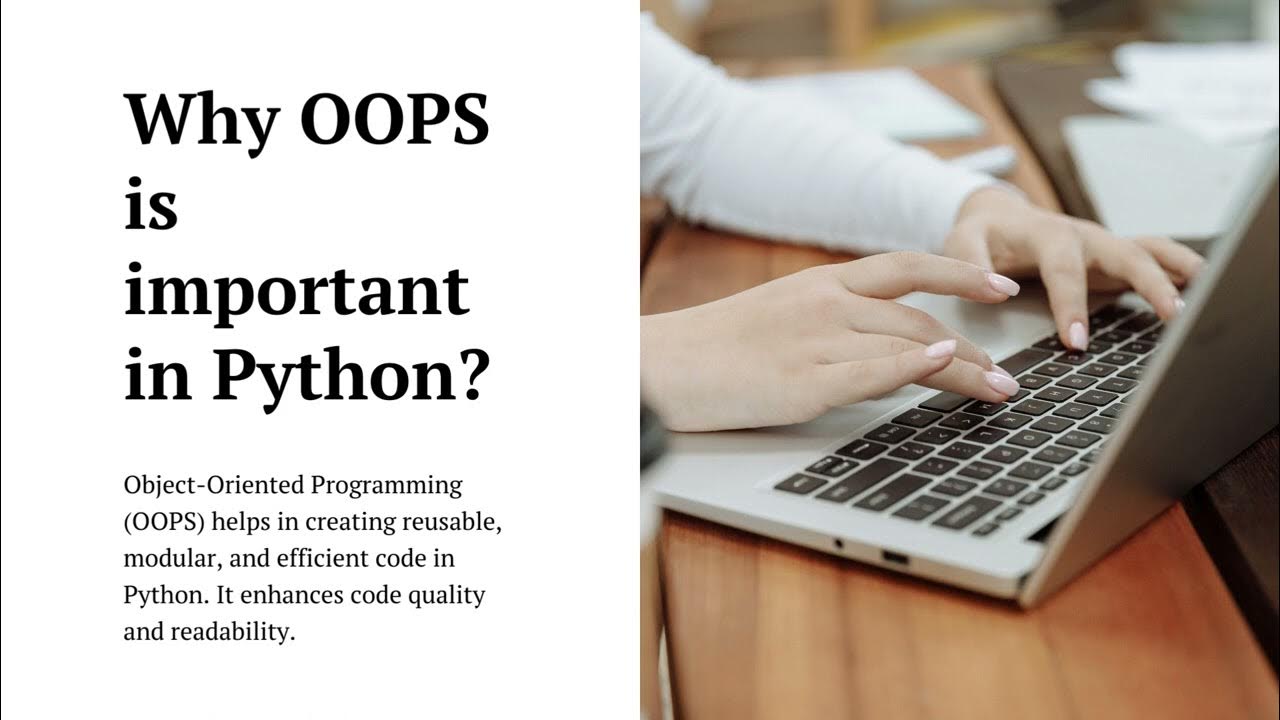
Understanding OOPS in Python | Object-oriented programming (...
0 views · Sep 30, 2023 monibe.com
Object-oriented programming (OOP) is a programming paradigm that uses objects and classes to structure code. Objects are self-contained entities that contain data and behavior. Classes are blueprints for creating objects. OOP is a popular programming paradigm because it offers a number of advantages, including: Code reuse: OOP allows you to reuse code by creating classes and objects. This can make your code more efficient and easier to maintain. Encapsulation: OOP allows you to encapsulate data and behavior within objects. This helps to protect your data from accidental modification and makes your code more modular. Abstraction: OOP allows you to abstract away the implementation details of objects. This makes your code easier to understand and maintain. Polymorphism: OOP allows you to implement polymorphism, which means that different objects can respond to the same message in different ways. This makes your code more flexible and extensible. Understanding OOP in Python Python is a fully object-oriented programming language. This means that everything in Python is an object, including numbers, strings, lists, and dictionaries. To create a class in Python, you use the class keyword. The class definition specifies the name of the class and its attributes and methods. For example, the following code defines a class called Car: Python class Car: def __init__(self, make, model, year): self.make = make self.model = model self.year = year def drive(self): print("The car is driving.") def stop(self): print("The car is stopped.") Use code with caution. Learn more To create an instance of the Car class, you use the new keyword. The new keyword takes the name of the class and any arguments to the class's constructor as arguments. For example, the following code creates a new Car object with the make Honda, model Civic, and year 2023: Python car = Car("Honda", "Civic", 2023) Use code with caution. Learn more You can then call the object's methods to access its data and behavior. For example, the following code calls the drive() method on the car object: Python car.drive() Use code with caution. Learn more This will print the following output to the console: The car is driving. OOP concepts in Python Some of the key OOP concepts in Python include: Classes: Classes are blueprints for creating objects. Objects: Objects are self-contained entities that contain data and behavior. Attributes: Attributes are the data that is associated with an object. Methods: Methods are the functions that are associated with an object. Inheritance: Inheritance allows you to create new classes that are based on existing classes. Polymorphism: Polymorphism allows you to implement polymorphism, which means that different objects can respond to the same message in different ways. Conclusion OOP is a powerful programming paradigm that offers a number of advantages, including code reuse, encapsulation, abstraction, and polymorphism. Python is a fully object-oriented programming language, and it provides a number of features that make it easy to implement OOP concepts in your code. If you are new to OOP, I recommend starting by learning about the basic OOP concepts of classes, objects, attributes, and methods. Once you have a good understanding of these concepts, you can start to learn about more advanced OOP concepts such as inheritance and polymorphism.
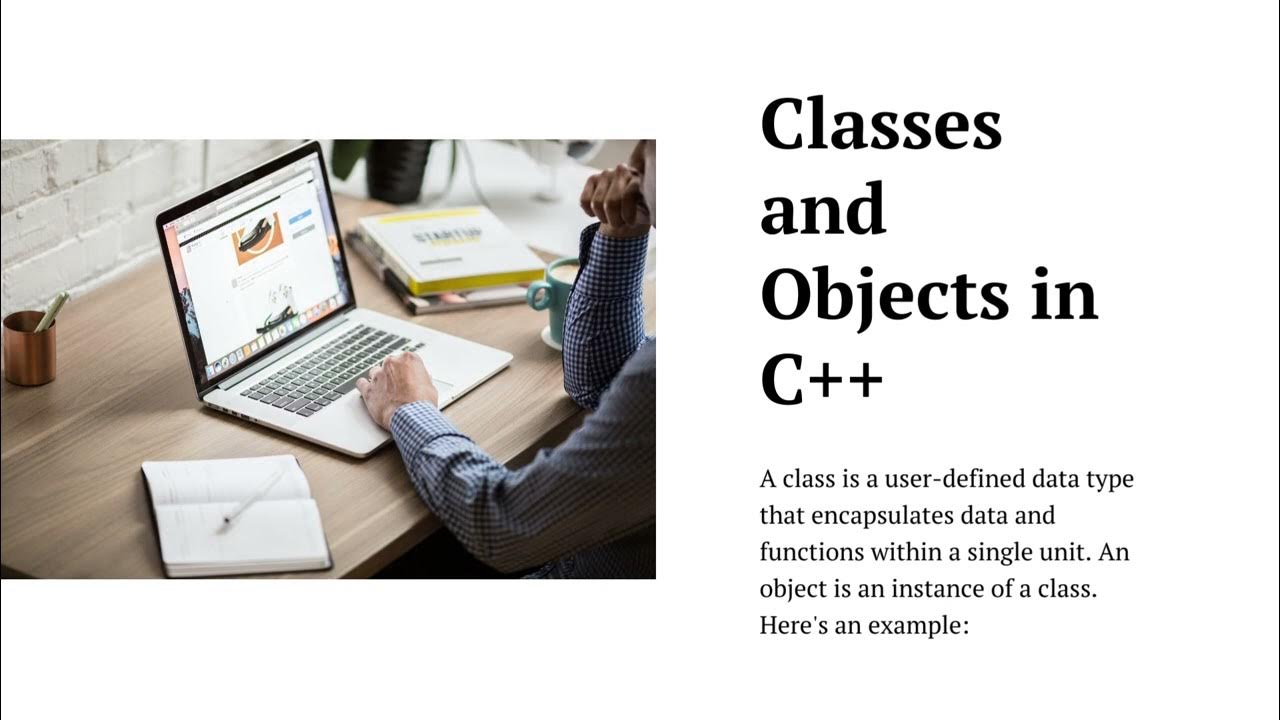
Object Oriented Programming in C++ | Polymorphism in C++ | A...
0 views · Sep 30, 2023 monibe.com
Object Oriented Programming in C++ Object-oriented programming (OOP) is a programming paradigm that uses objects and classes to structure code. Objects are self-contained entities that contain data and behavior. Classes are blueprints for creating objects. C++ is a partially object-oriented programming language, which means that it supports OOP concepts such as classes, objects, inheritance, encapsulation, abstraction, and polymorphism, but it also supports procedural programming concepts such as functions and global variables. Classes and objects in C++ To create a class in C++, you use the class keyword. The class definition specifies the name of the class and its members, which can be data members (attributes) or member functions (methods). For example, the following code defines a class called Car: C++ class Car { public: string make; string model; int year; void drive() { cout "The car is driving." endl; } void stop() { cout "The car is stopped." endl; } }; Use code with caution. Learn more To create an instance of the Car class, you use the new operator. The new operator takes the name of the class as an argument and returns a pointer to a new instance of the class. For example, the following code creates a new Car object: C++ Car* car = new Car; Use code with caution. Learn more You can then access the object's data members and member functions using the dot operator (.). For example, the following code sets the make and model of the car object: C++ car- make = "Honda"; car- model = "Civic"; Use code with caution. Learn more And the following code calls the drive() method on the car object: C++ car- drive(); Use code with caution. Learn more Inheritance in C++ Inheritance allows you to create new classes that are based on existing classes. This allows you to reuse code and create a hierarchy of classes. To create a class that inherits from another class, you use the : colon operator. For example, the following code defines a class called SportsCar that inherits from the Car class: C++ class SportsCar : public Car { public: int maxSpeed; }; Use code with caution. Learn more The SportsCar class inherits all of the data members and member functions of the Car class. It also has its own data member, maxSpeed. Encapsulation in C++ Encapsulation is the process of bundling data and behavior together into a single unit. This helps to protect the data from accidental modification and makes the code more modular. In C++, you can encapsulate data and behavior by declaring the data members and member functions of a class as private. This means that they can only be accessed by the member functions of the class. For example, the following code declares the data members and member functions of the Car class as private: C++ class Car { private: string make; string model; int year; void drive() { cout "The car is driving." endl; } void stop() { cout "The car is stopped." endl; } }; Use code with caution. Learn more To access the data members of the Car class, you must use the member functions of the class. For example, the following code uses the getMake() member function to get the make of the car object: C++ string make = car- getMake(); Use code with caution. Learn more Abstraction in C++ Abstraction is the process of hiding the implementation details of a class and only exposing the functionality that is needed by the user of the class. This makes the code easier to understand and maintain. In C++, you can implement abstraction by using pure virtual functions. A pure virtual function is a function that has no implementation in the base class. It is the responsibility of the derived classes to implement the pure virtual function. For example, the following code defines a pure virtual function called drive() in the Car class: C++ class Car { public: virtual void drive() = 0; }; Use code with caution. Learn more The drive() function is pure virtual because it has no implementation in the Car class. The derived classes, such as the SportsCar class, must implement the drive() function. Polymorphism in C++ Polymorphism is the ability of different objects to respond to the same message in different ways. This makes

Object Oriented Programming in C++ | Polymorphism in C++ | A...
0 views · Sep 30, 2023 monibe.com
Object Oriented Programming in C++ Object-oriented programming (OOP) is a programming paradigm that uses objects and classes to structure code. Objects are self-contained entities that contain data and behavior. Classes are blueprints for creating objects. C++ is a partially object-oriented programming language, which means that it supports OOP concepts such as classes, objects, inheritance, encapsulation, abstraction, and polymorphism, but it also supports procedural programming concepts such as functions and global variables. Classes and objects in C++ To create a class in C++, you use the class keyword. The class definition specifies the name of the class and its members, which can be data members (attributes) or member functions (methods). For example, the following code defines a class called Car: C++ class Car { public: string make; string model; int year; void drive() { cout "The car is driving." endl; } void stop() { cout "The car is stopped." endl; } }; Use code with caution. Learn more To create an instance of the Car class, you use the new operator. The new operator takes the name of the class as an argument and returns a pointer to a new instance of the class. For example, the following code creates a new Car object: C++ Car* car = new Car; Use code with caution. Learn more You can then access the object's data members and member functions using the dot operator (.). For example, the following code sets the make and model of the car object: C++ car- make = "Honda"; car- model = "Civic"; Use code with caution. Learn more And the following code calls the drive() method on the car object: C++ car- drive(); Use code with caution. Learn more Inheritance in C++ Inheritance allows you to create new classes that are based on existing classes. This allows you to reuse code and create a hierarchy of classes. To create a class that inherits from another class, you use the : colon operator. For example, the following code defines a class called SportsCar that inherits from the Car class: C++ class SportsCar : public Car { public: int maxSpeed; }; Use code with caution. Learn more The SportsCar class inherits all of the data members and member functions of the Car class. It also has its own data member, maxSpeed. Encapsulation in C++ Encapsulation is the process of bundling data and behavior together into a single unit. This helps to protect the data from accidental modification and makes the code more modular. In C++, you can encapsulate data and behavior by declaring the data members and member functions of a class as private. This means that they can only be accessed by the member functions of the class. For example, the following code declares the data members and member functions of the Car class as private: C++ class Car { private: string make; string model; int year; void drive() { cout "The car is driving." endl; } void stop() { cout "The car is stopped." endl; } }; Use code with caution. Learn more To access the data members of the Car class, you must use the member functions of the class. For example, the following code uses the getMake() member function to get the make of the car object: C++ string make = car- getMake(); Use code with caution. Learn more Abstraction in C++ Abstraction is the process of hiding the implementation details of a class and only exposing the functionality that is needed by the user of the class. This makes the code easier to understand and maintain. In C++, you can implement abstraction by using pure virtual functions. A pure virtual function is a function that has no implementation in the base class. It is the responsibility of the derived classes to implement the pure virtual function. For example, the following code defines a pure virtual function called drive() in the Car class: C++ class Car { public: virtual void drive() = 0; }; Use code with caution. Learn more The drive() function is pure virtual because it has no implementation in the Car class. The derived classes, such as the SportsCar class, must implement the drive() function. Polymorphism in C++ Polymorphism is the ability of different objects to respond to the same message in different ways. This makes

TCS NQT Your Ultimate Guide to Success | programming languag...
3K views · Sep 19, 2023 monibe.com
TCS NQT is a national-level online test conducted by Tata Consultancy Services (TCS) for hiring fresh graduates in the IT industry. The test is designed to assess the candidate's quantitative aptitude, verbal ability, and programming skills. To succeed in the TCS NQT, candidates must have a strong understanding of the following topics: Quantitative aptitude: This includes topics such as arithmetic, algebra, geometry, and trigonometry. Verbal ability: This includes topics such as grammar, vocabulary, and comprehension. Programming skills: This includes topics such as data structures, algorithms, and programming languages such as C, C++, and Java. Here are some tips for success in the TCS NQT: Prepare well in advance: Start your preparation at least 3-6 months before the exam. This will give you enough time to cover all the topics and practice your skills. Use the right study materials: There are many books and online resources available to help you prepare for the TCS NQT. Choose study materials that are aligned with the exam syllabus and that cover all the topics in a comprehensive manner. Practice regularly: The best way to prepare for any exam is to practice regularly. Solve mock tests and previous year papers to get a feel for the exam format and to identify your strengths and weaknesses. Stay calm and focused on the day of the exam: Get a good night's sleep before the exam and eat a healthy breakfast on the day of the exam. Arrive at the exam center early so that you have enough time to relax and focus on the exam. Here are some additional tips: Focus on your strengths: Identify your strengths and weaknesses and focus on improving your weaknesses. Take breaks: Don't try to study for long hours without taking breaks. Take short breaks every 30-45 minutes to stay refreshed and focused. Stay motivated: Keep yourself motivated by setting realistic goals and by tracking your progress. If you follow these tips, you will be well on your way to success in the TCS NQT.

Introduction to Python Programming Language | Python, variab...
443 views · Sep 19, 2023 monibe.com
Python is a general-purpose, high-level programming language. Its design philosophy emphasizes code readability with its notable use of significant whitespace. Its language constructs and object-oriented approach aim to help programmers write clear, logical code for small and large-scale projects. Python is a popular choice for beginners in programming because it is relatively easy to learn and has a large community of users and developers. It is also a popular language for data science, machine learning, and artificial intelligence. Here is a brief introduction to the Python programming language: Variables and data types In Python, variables are used to store data. To create a variable, you simply assign a value to it. For example, the following code creates a variable called name and assigns the value "Bard" to it: Python name = "Bard" Use code with caution. Learn more Python has a number of different data types, including strings, numbers, booleans, and lists. The data type of a variable determines what kind of data it can store and what operations can be performed on it. Functions Functions are used to group code together and perform a specific task. To create a function, you use the def keyword followed by the name of the function and a pair of parentheses. Inside the parentheses, you list the parameters that the function takes. The body of the function goes between the curly braces. For example, the following code creates a function called greet(): Python def greet(): print("Hello, world!") Use code with caution. Learn more To call the function, you simply type the name of the function followed by a pair of parentheses. For example, the following code calls the greet() function: Python greet() Use code with caution. Learn more Conditional statements Conditional statements allow you to control the flow of your code based on certain conditions. The most common conditional statements are if, else, and elif. For example, the following code uses an if statement to check if the variable name is equal to the string "Bard". If it is, the code prints a greeting to the console: Python if name == "Bard": print("Hello, Bard!") Use code with caution. Learn more Loops Loops allow you to repeat code a certain number of times or until a certain condition is met. The most common loops are for loops and while loops. For example, the following code uses a for loop to print the numbers from 1 to 10 to the console: Python for i in range(1, 11): print(i) Use code with caution. Learn more Classes and objects Python supports object-oriented programming concepts such as classes and objects. Classes are used to define the structure and behavior of objects. Objects are instances of classes. For example, the following code creates a class called Person: Python class Person: def __init__(self, name, age): self.name = name self.age = age def greet(self): print(f"Hello, my name is {self.name} and I am {self.age} years old.") Use code with caution. Learn more To create an object of the Person class, you would use the following code: Python person = Person("Bard", 2) Use code with caution. Learn more You can then access the members of the object using the dot notation. For example, the following code calls the greet() method on the person object: Python person.greet() Use code with caution. Learn more Conclusion Python is a powerful and versatile programming language that can be used for a wide variety of tasks. It is a good language for beginners to learn, as it is relatively easy to learn and there are many resources available to help you get started. If you are interested in learning more about Python, there are many resources available online and in libraries. You can also find many Python tutorials and courses on websites such as Coursera and Udemy. Sources dev.to/veldakiara/the-framework-for-perfectionists-with-deadlines-4n6c profoundedutech.com/blog/what-is-python-and-benefit-of-python-course/ cgpioneer.in/rsx3e/python-cheat-sheet-poster github.com/C5fifteen/python-examples

A Beginner's Guide to Java Programming | Java also suppo...
3K views · Sep 19, 2023 monibe.com
Java is a general-purpose, object-oriented programming language that is used to develop a wide variety of applications, including web applications, mobile applications, desktop applications, and embedded systems. It is one of the most popular programming languages in the world, and it is known for its reliability, security, and portability. Here is a beginner's guide to Java programming: Getting started To get started with Java programming, you will need to install the Java Development Kit (JDK). The JDK includes the Java compiler, which is used to compile Java code into bytecode. Bytecode is a platform-independent format that can be executed on any platform that has a Java Virtual Machine (JVM). Once you have installed the JDK, you can start writing Java code. To do this, you can use a text editor or an integrated development environment (IDE). An IDE is a software application that provides a variety of features to help you write, compile, and debug Java code. Some popular IDEs for Java programming include Eclipse, IntelliJ IDEA, and NetBeans. Java basics Java is a statically typed language, which means that the data type of each variable must be declared before it is used. Java also has a number of primitive data types, including int, long, float, double, char, and boolean. In addition to primitive data types, Java also has a number of reference data types, such as String and Object. Reference data types are used to store references to objects. Objects are instances of classes. Classes are used to define the structure and behavior of objects. Java also supports object-oriented programming concepts such as inheritance, polymorphism, and encapsulation. Inheritance allows you to create new classes that inherit the properties and behaviors of existing classes. Polymorphism allows you to write code that can handle different types of objects in a generic way. Encapsulation allows you to bundle data and behavior together into a single unit. Writing Java programs To write a Java program, you must first create a class. A class is a blueprint for creating objects. It defines the structure and behavior of objects. To create a class, you use the class keyword followed by the name of the class. For example, the following code creates a class called Person: Java public class Person { // Class members go here } Use code with caution. Learn more Once you have created a class, you can create objects of that class using the new keyword. For example, the following code creates a new Person object: Java Person person = new Person(); Use code with caution. Learn more You can then access the members of the object using the dot notation. For example, the following code prints the name of the person object to the console: Java System.out.println(person.name); Use code with caution. Learn more Learning more about Java There are many resources available to help you learn more about Java programming. Here are a few suggestions: The Java Tutorial: https://docs.oracle.com/javase/tutorial/ The MOOC Java Programming for Beginners on Coursera: https://www.coursera.org/learn/java-programming The book Head First Java by Kathy Sierra and Bert Bates Conclusion Java is a powerful and versatile programming language that can be used to develop a wide variety of applications. It is a good language for beginners to learn, as it is relatively easy to learn and there are many resources available to help you get started
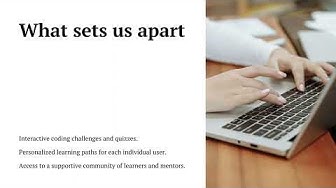
Programming language learning platform | programming languag...
2K views · Sep 22, 2023 monibe.com
Programming language learning platform A programming language learning platform is a website or app that helps you learn how to code in different programming languages. These platforms typically offer a variety of features, such as: Interactive coding lessons: These lessons teach you the basics of coding and allow you to practice your skills as you go. Code editors: These editors provide a simple and convenient way to write and test your code. Feedback: Many platforms provide feedback on your code, which can help you identify and fix errors. Community: Many platforms also have communities where you can ask questions and get help from other programmers. Here are some popular programming language learning platforms: Codecademy freeCodeCamp edX Coursera Udemy Pluralsight BitDegree Codewars HackerRank LeetCode Exercism CodeSignal Sololearn These platforms offer a variety of features and pricing plans, so you can choose the one that is right for you. When choosing a programming language learning platform, it is important to consider the following factors: Programming language: What programming language do you want to learn? Make sure the platform you choose offers courses in that language. Learning style: Do you prefer to learn by reading, watching videos, or doing hands-on exercises? Choose a platform that offers learning materials in your preferred style. Budget: Some programming language learning platforms are free, while others charge a subscription fee. Choose a platform that fits your budget. Reviews: Read reviews of different platforms before making a decision. This can help you get a better idea of what other people think of the platform and its features. No matter which platform you choose, the most important thing is to be consistent and to keep learning. Programming can be challenging, but it is also very rewarding. With practice, you can learn to code and build amazing things.

Code snippet sharing site | different programming languages
616 views · Sep 22, 2023 monibe.com
Code snippet sharing site A code snippet sharing site is a website where developers can share and discover code snippets in different programming languages. These sites typically offer a variety of features, such as: Code search: Allows users to search for code snippets by language, topic, or keyword. Code syntax highlighting: Makes code snippets easier to read and understand. Code embeds: Allows users to embed code snippets in their blog posts, articles, or other websites. Code voting and commenting: Allows users to vote on and comment on code snippets, which can help to identify and improve the quality of the code. Here are some popular code snippet sharing sites: GitHub Gist CodePen Stack Overflow Code Snippets Snipplr Pastebin Codeable Repl.it Db Fiddle SQL Fiddle Codeply CodeSandbox These sites offer a variety of features and pricing plans, so you can choose the one that is right for you. When choosing a code snippet sharing site, it is important to consider the following factors: Programming languages: What programming languages do you want to share and discover code snippets in? Make sure the site you choose supports the programming languages you are interested in. Features: What features are important to you, such as code search, syntax highlighting, code embeds, and code voting and commenting? Ease of use: Choose a code snippet sharing site that is easy to use and navigate. Community: Choose a code snippet sharing site with a strong community where you can ask questions and get help. Code snippet sharing sites are a great resource for developers of all levels of experience. They can help you to learn new things, discover new tools and libraries, and collaborate with other developers.
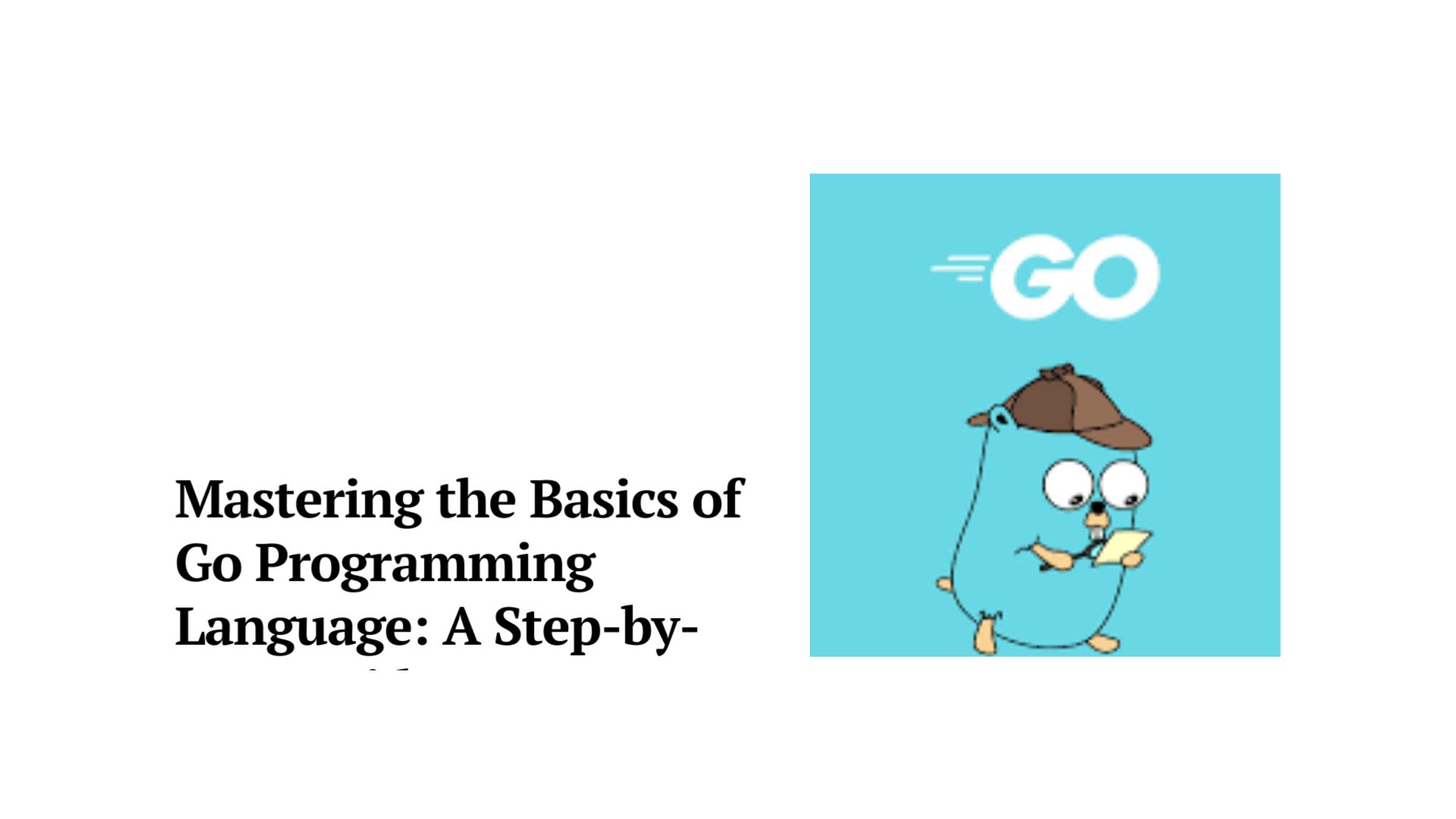
Mastering the Basics of Go Programming Language A Step-by-St...
12K views · May 26, 2023 monibe.com
Unlock the power of the Go programming language and master its core concepts with ease. In this comprehensive step-by-step guide, we take you on a journey to become a proficient Go developer, starting from the basics and gradually building your expertise. Explore the key foundations of Go programming, including its simple syntax, strong typing, and efficient concurrency model. Gain a solid understanding of the language's design principles and learn how Go promotes clean, readable, and scalable code. Follow along as we guide you through the installation and setup of the Go development environment. Learn how to write your first Go program and explore essential concepts such as variables, data types, control flow structures, and functions. Delve into Go's package management system and discover how to leverage the vast ecosystem of libraries and tools to enhance your development process. Explore best practices for project structure, code organization, and error handling to build robust and maintainable Go applications. Gain insights into Go's unique features, including goroutines and channels, and understand how they enable efficient and concurrent programming. Learn how to handle errors effectively, write unit tests, and benchmark your Go code for optimal performance. Join our expert instructor as they provide practical examples, real-world scenarios, and hands-on exercises to reinforce your learning. By the end of this guide, you'll have a solid foundation in Go programming and the skills to embark on your own Go projects. Stay ahead of the curve by mastering the basics of the Go programming language. Elevate your development skills, create efficient and scalable applications, and embrace the power of Go in your software projects.
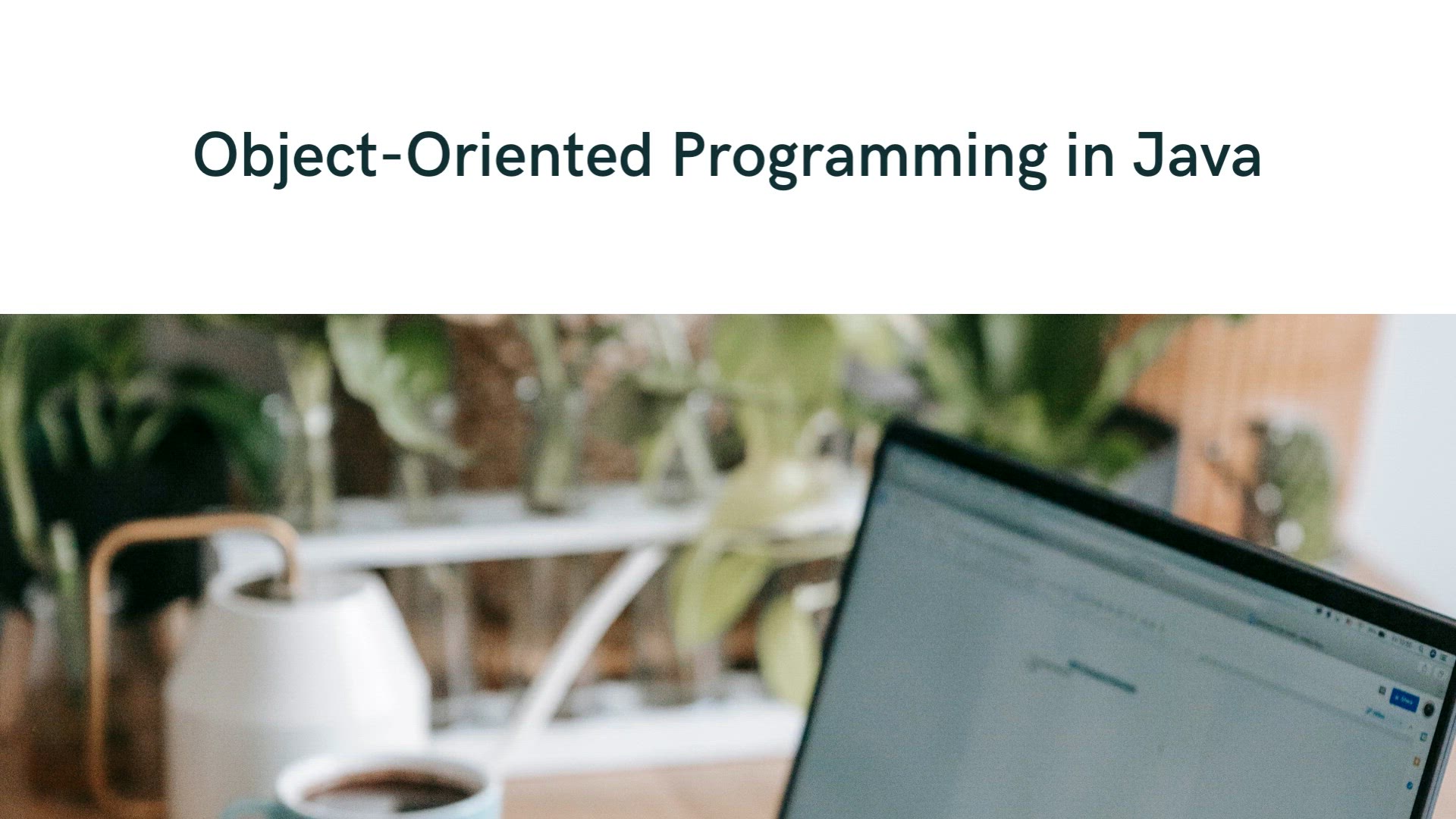
Object-Oriented Programming in Java: Master the Foundations ...
4K views · May 24, 2023 monibe.com
Dive into the world of Object-Oriented Programming (OOP) with this comprehensive video tutorial on Object-Oriented Programming in Java. Whether you're a beginner or an experienced Java developer, this video will equip you with the essential knowledge and skills to design and build robust Java applications using the principles of OOP. From classes and objects to inheritance, polymorphism, and encapsulation, you'll learn how to leverage the power of OOP to create modular and reusable code. With practical examples and step-by-step explanations, you'll gain a solid understanding of OOP concepts and how to apply them effectively in your Java projects.
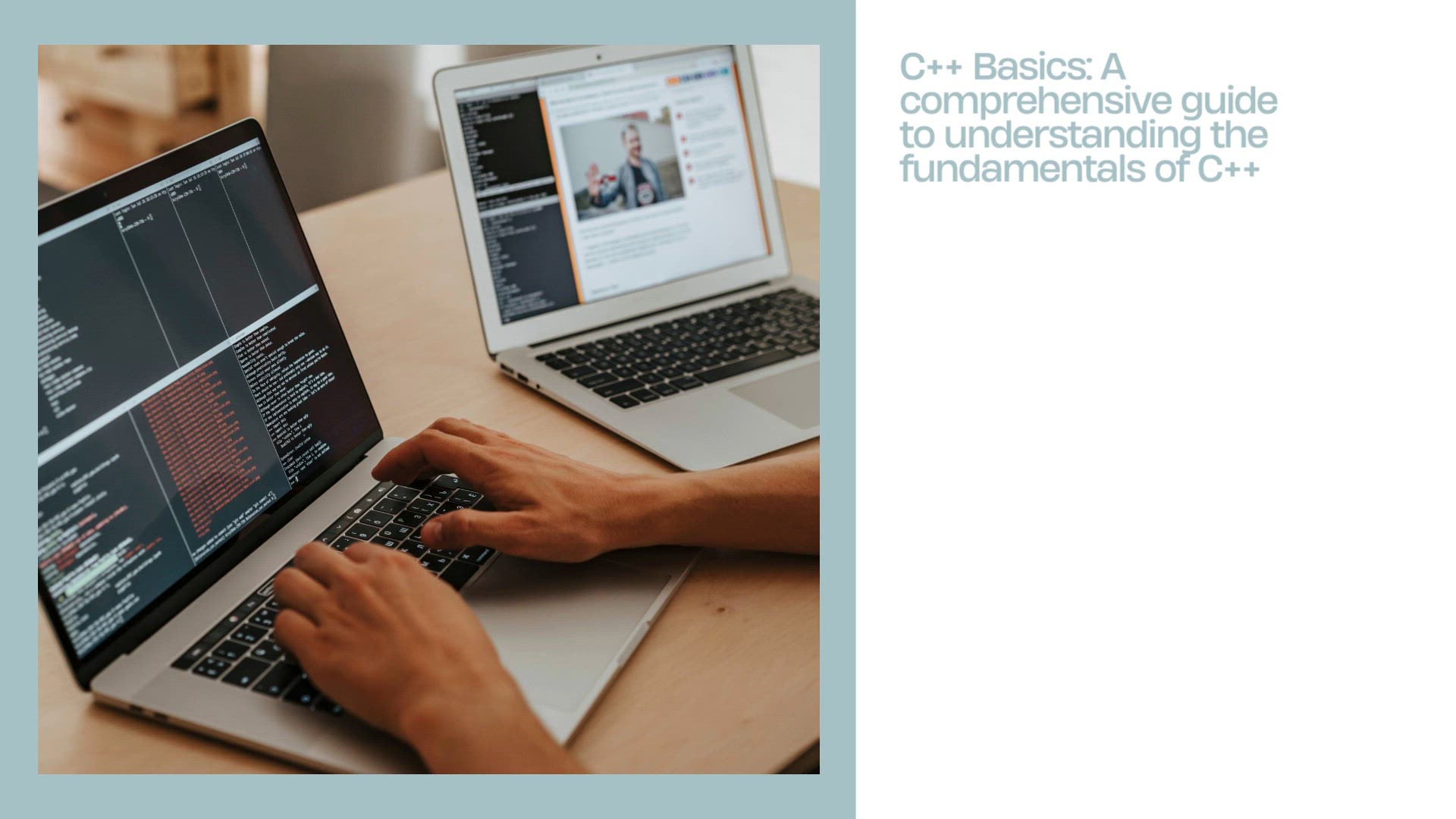
Object-Oriented Programming (OOP) in C++
4K views · May 29, 2023 monibe.com
Object-Oriented Programming (OOP) is a programming paradigm that treats data as objects, which are defined by their state and behavior. C++ is a general-purpose programming language that supports OOP. OOP in C++ allows programmers to create reusable code, improve code readability and maintainability, and make code more modular. This article will discuss the basics of OOP in C++, including classes, objects, inheritance, polymorphism, and encapsulation. It will also provide examples of how OOP can be used to improve the design and implementation of C++ programs. If you are interested in learning more about OOP in C++, this article is a great place to start.
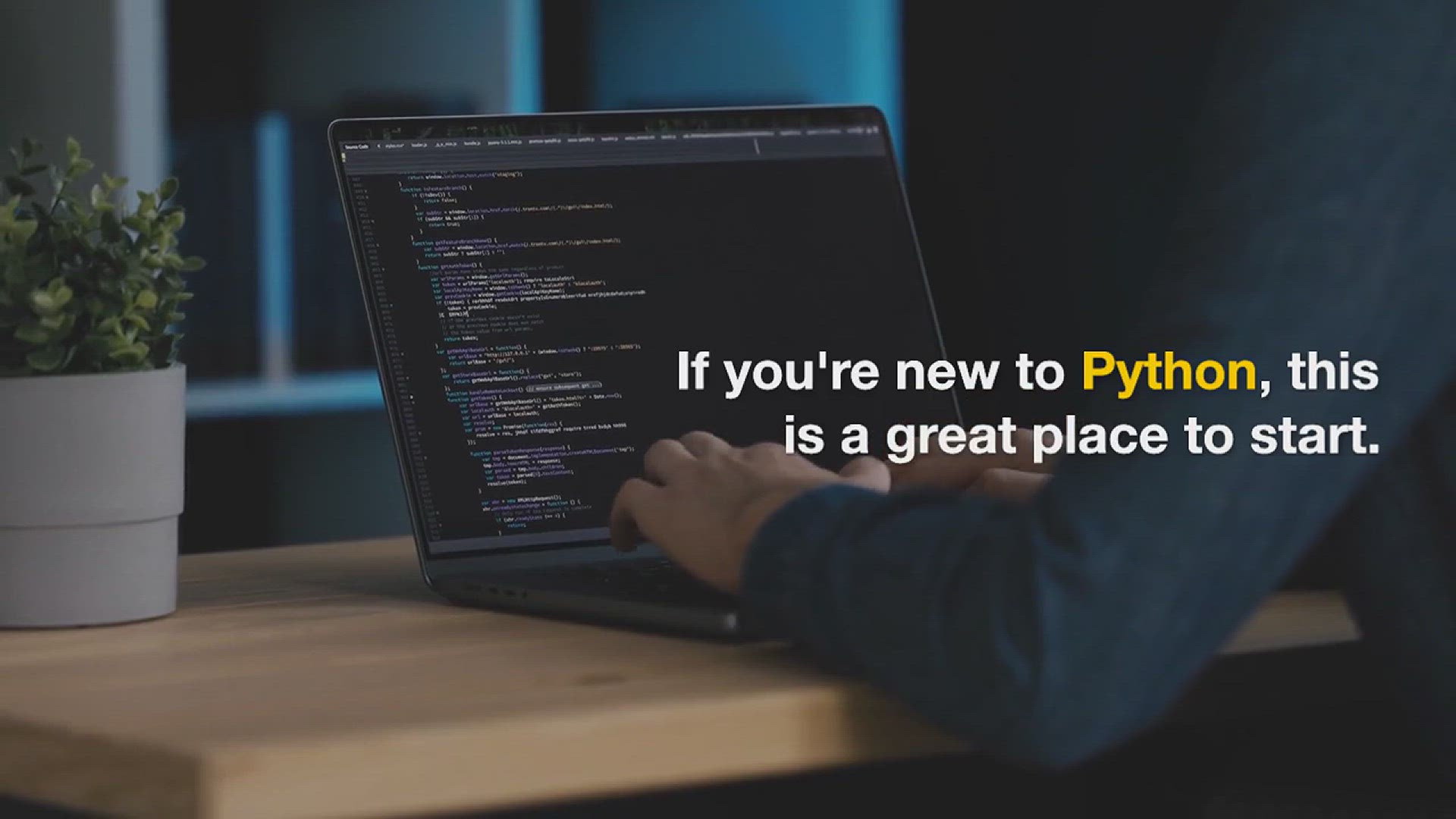
Python Dictionaries Python Beginner Tutorials | Python Dicti...
242 views · May 22, 2024 monibe.com
Let's dive into Python Dictionaries for beginners: What are Python Dictionaries? Imagine a regular dictionary where you look up words and their definitions. Python dictionaries work similarly, but they store information in key-value pairs. Keys: Think of these as unique labels or identifiers for your information. Keys must be immutable (unchangeable) data types like strings, numbers, or tuples. Values: This is the actual data you want to store. Values can be any data type, including strings, numbers, lists, or even other dictionaries (we'll get to that later). Creating Dictionaries: There are two main ways to create dictionaries in Python: Curly braces: This is the most common way. You place your key-value pairs enclosed in curly braces {}, separated by commas. Here's an example: Python person = {"name": "Alice", "age": 30, "city": "New York"} Use code with caution. content_copy In this example, "name", "age", and "city" are the keys, and "Alice", 30, and "New York" are the corresponding values. dict() function: This is a built-in function that allows you to create dictionaries explicitly. You can pass key-value pairs as arguments or use keyword arguments. Here's an example: Python fruits = dict(apple="red", banana="yellow", orange="orange") Use code with caution. content_copy Accessing Values: To access a value in a dictionary, you use the key within square brackets []. Remember, keys are case-sensitive! Python print(person["name"]) # This will output "Alice" Use code with caution. content_copy Adding and Removing Items: Adding: You can add new key-value pairs to an existing dictionary using the assignment operator =. Python person["occupation"] = "Software Engineer" Use code with caution. content_copy Removing: To remove a key-value pair, use the del keyword followed by the key in square brackets. Python del fruits["banana"] Use code with caution. content_copy Common Dictionary Methods: keys(): Returns a view of all the keys in the dictionary. values(): Returns a view of all the values in the dictionary. items(): Returns a view of all key-value pairs as tuples. get(key, default): Returns the value of the specified key. If the key doesn't exist, it returns the default value (optional). Key Points to Remember: Keys must be unique and immutable. Values can be any data type. Dictionaries are unordered, meaning the order you insert items might not be preserved. Practice Exercises: Create a dictionary to store information about your favorite book. Write a program to check if a specific key exists in a dictionary. Loop through a dictionary and print all the keys and values. Further Learning: Explore nested dictionaries, which allow you to store dictionaries within dictionaries. Look into dictionary comprehension, a concise way to create dictionaries. Practice using dictionary methods to manipulate and analyze your data effectively